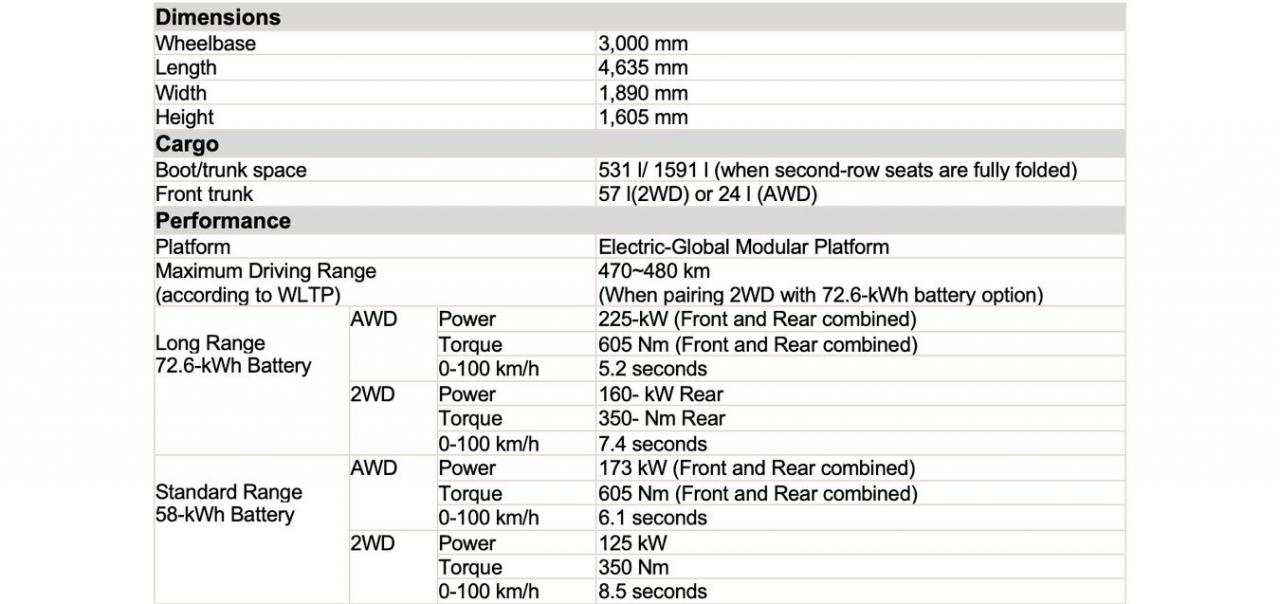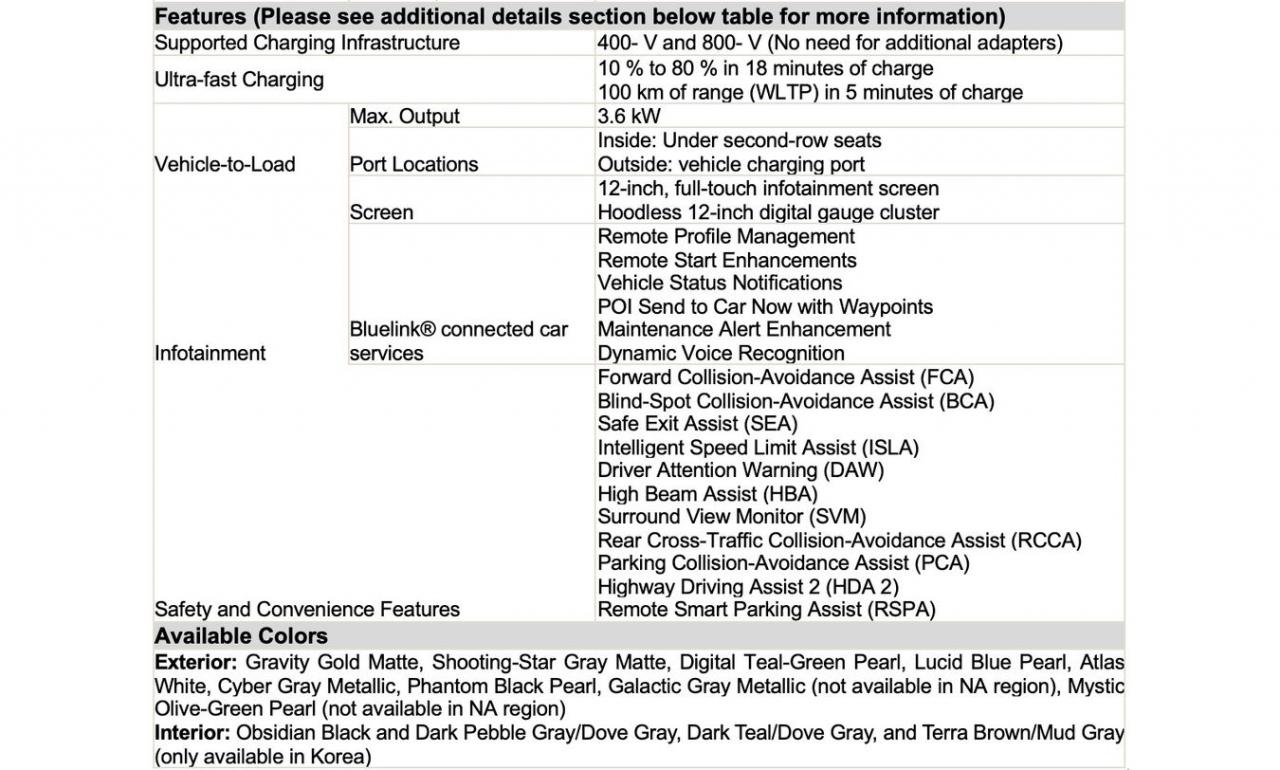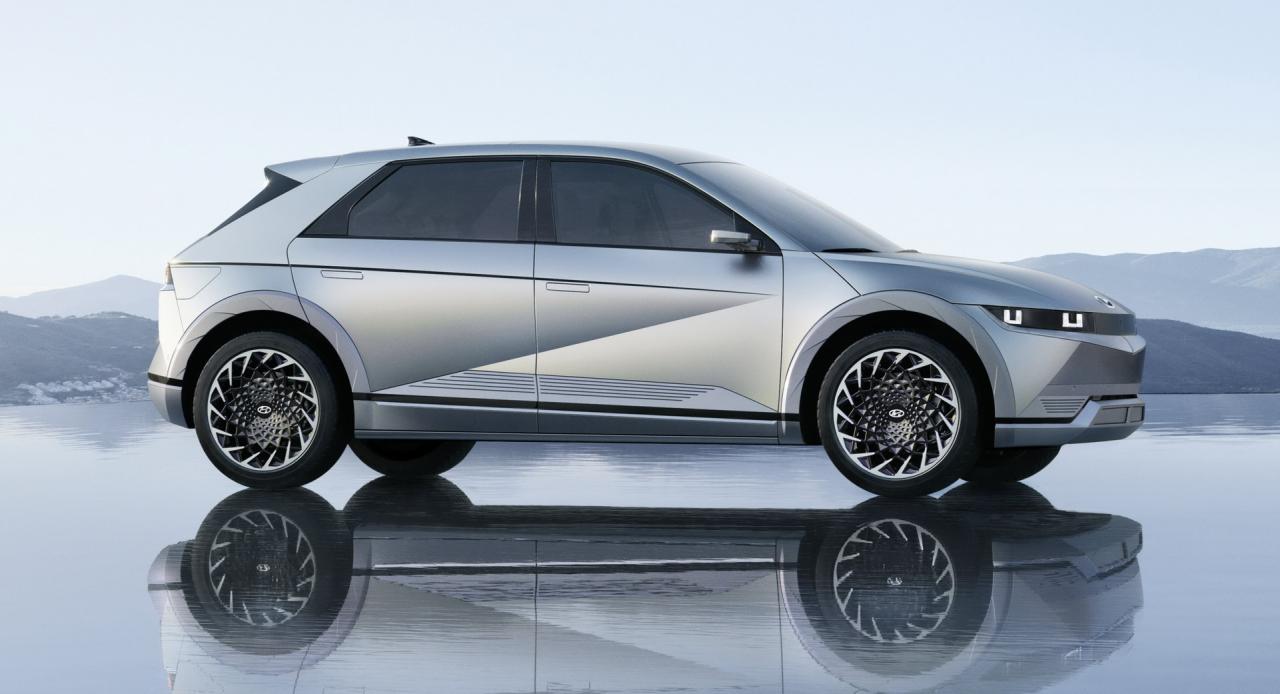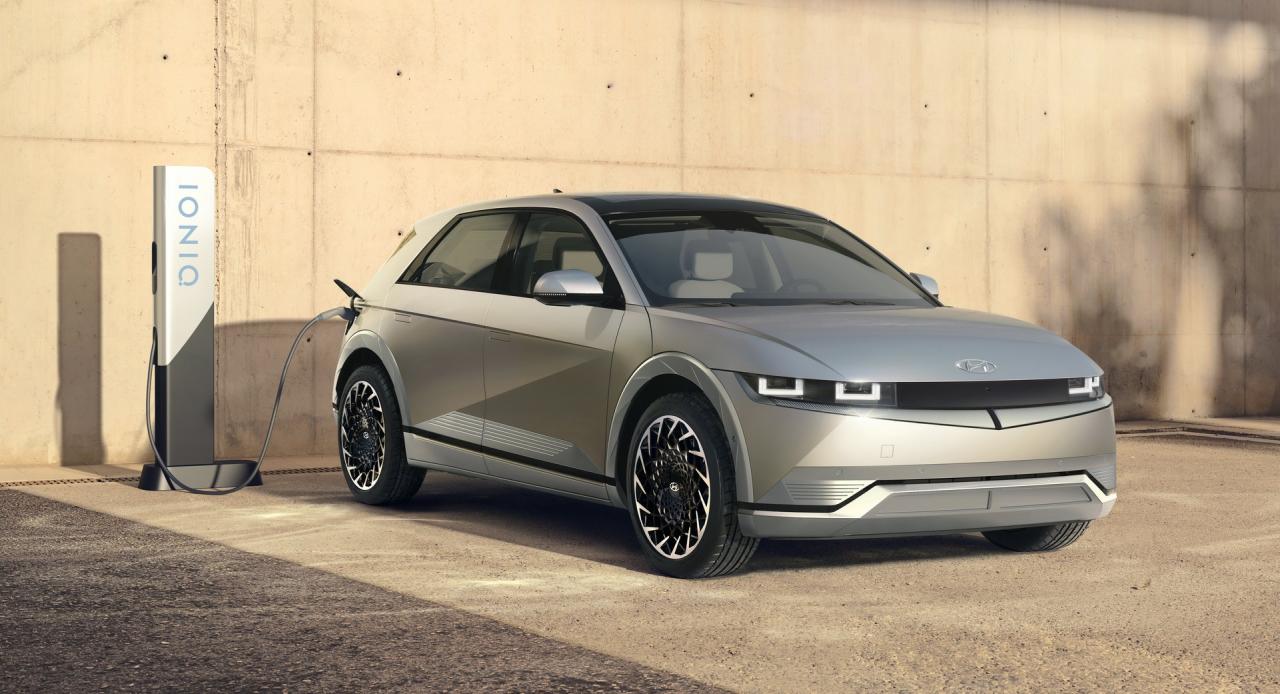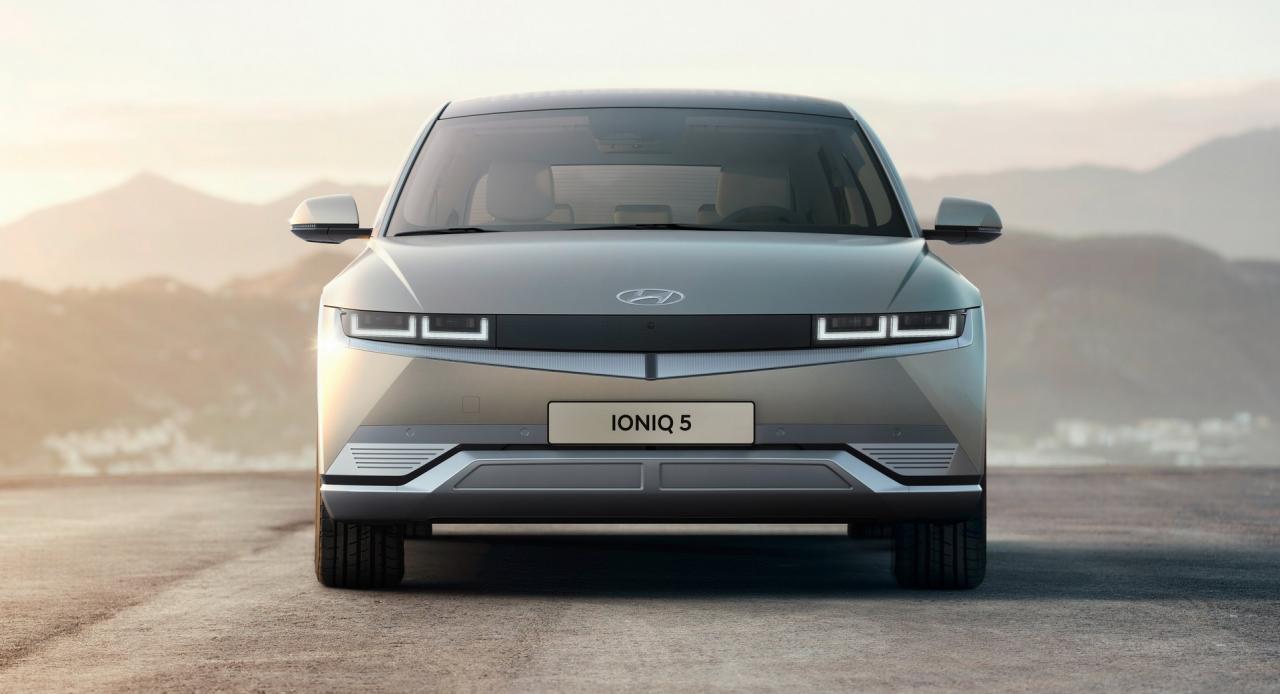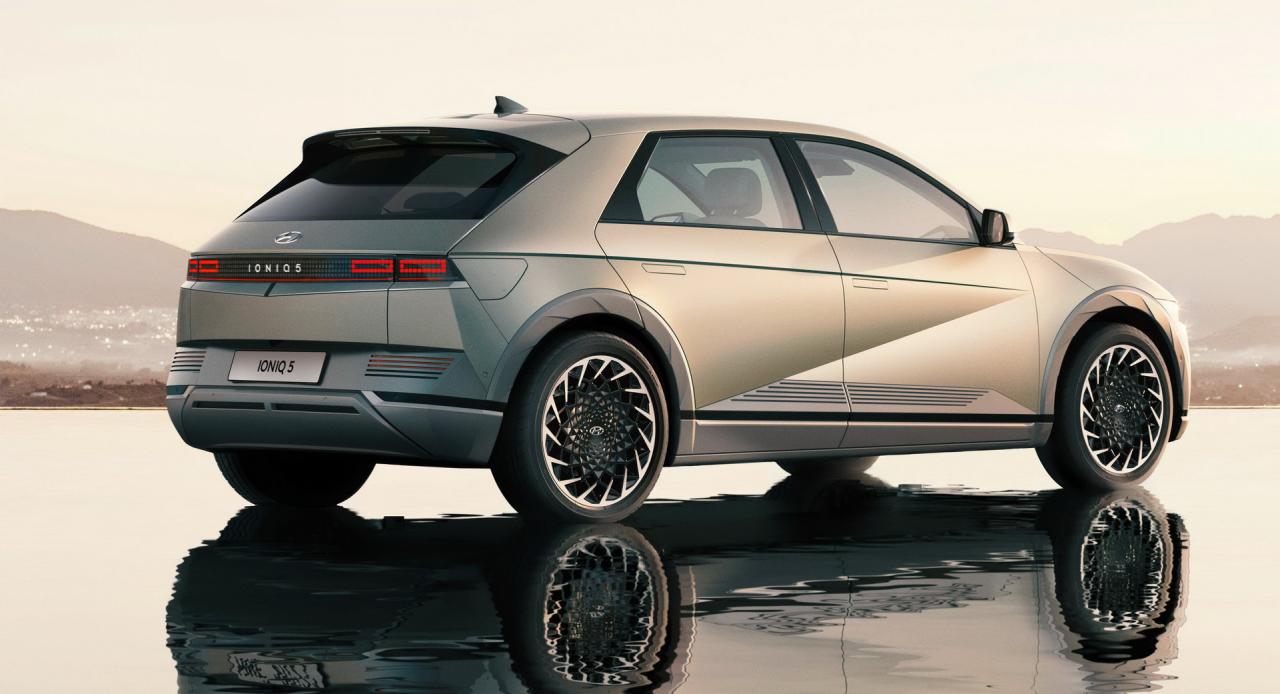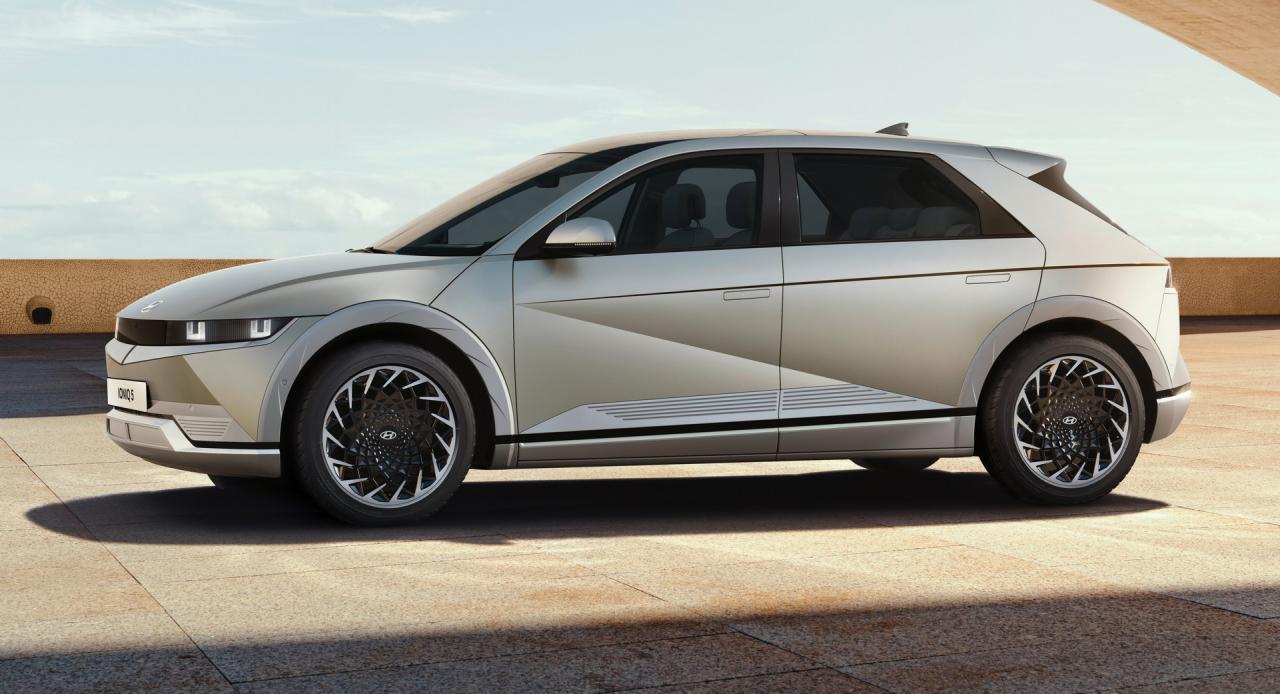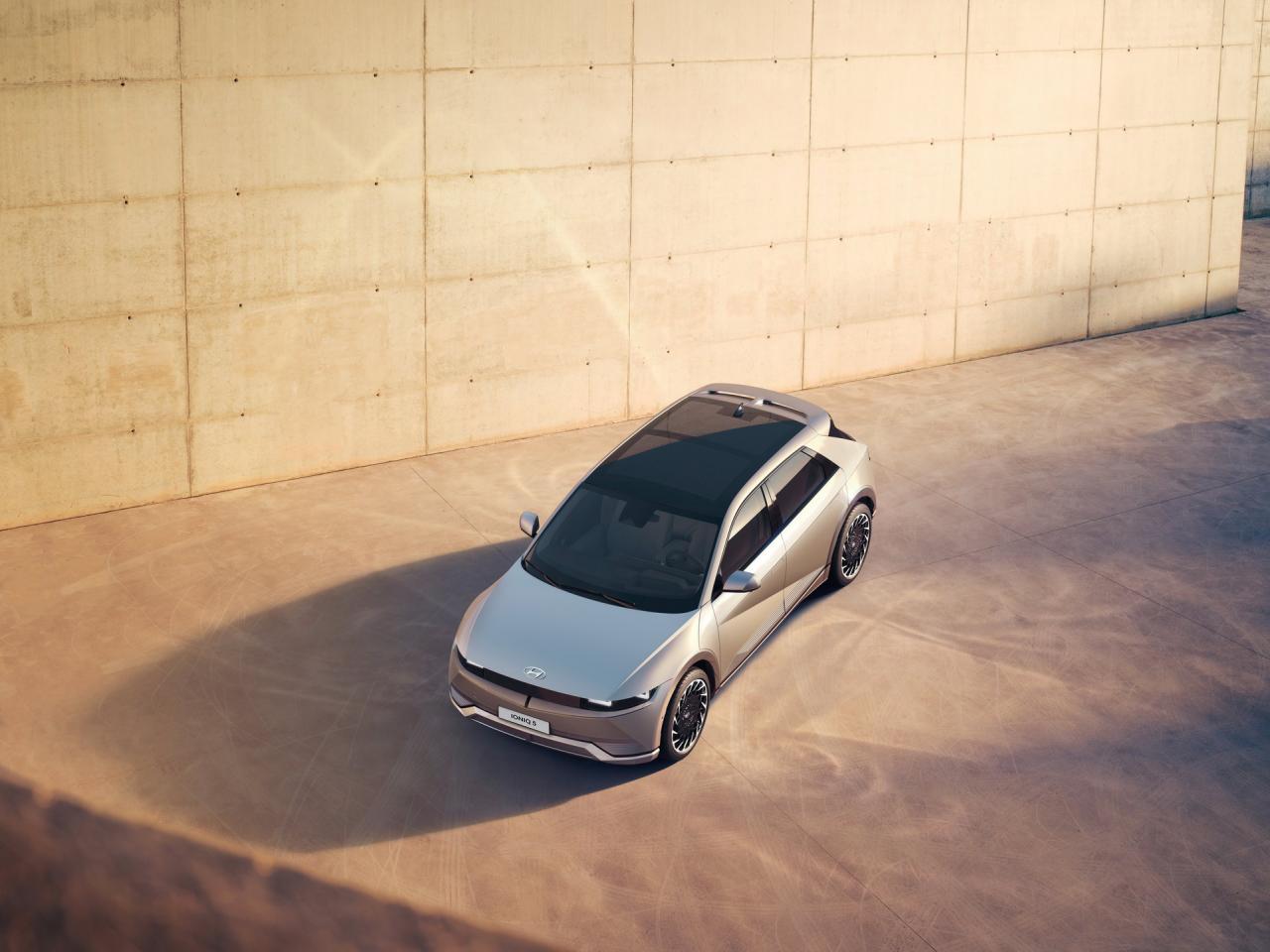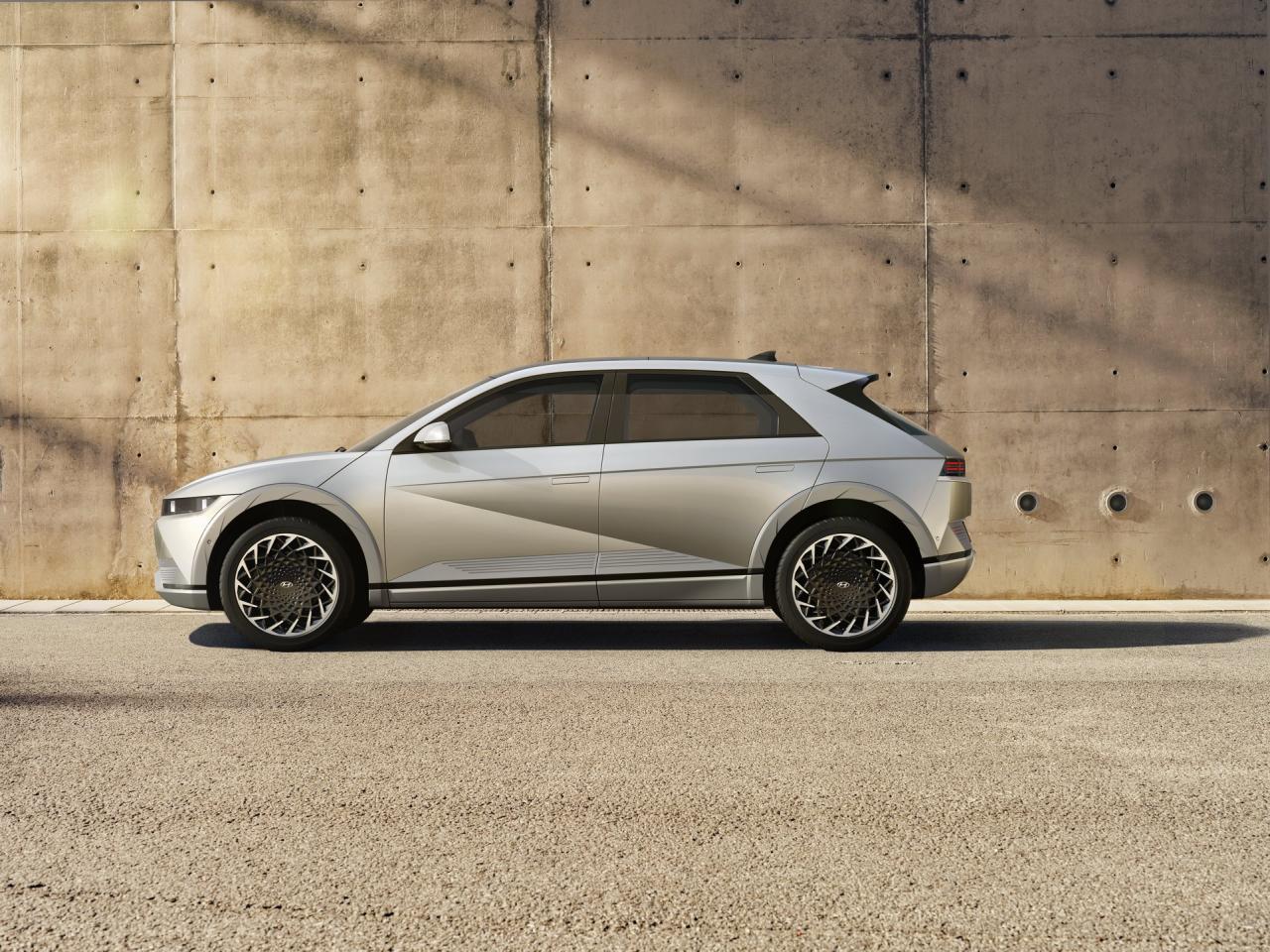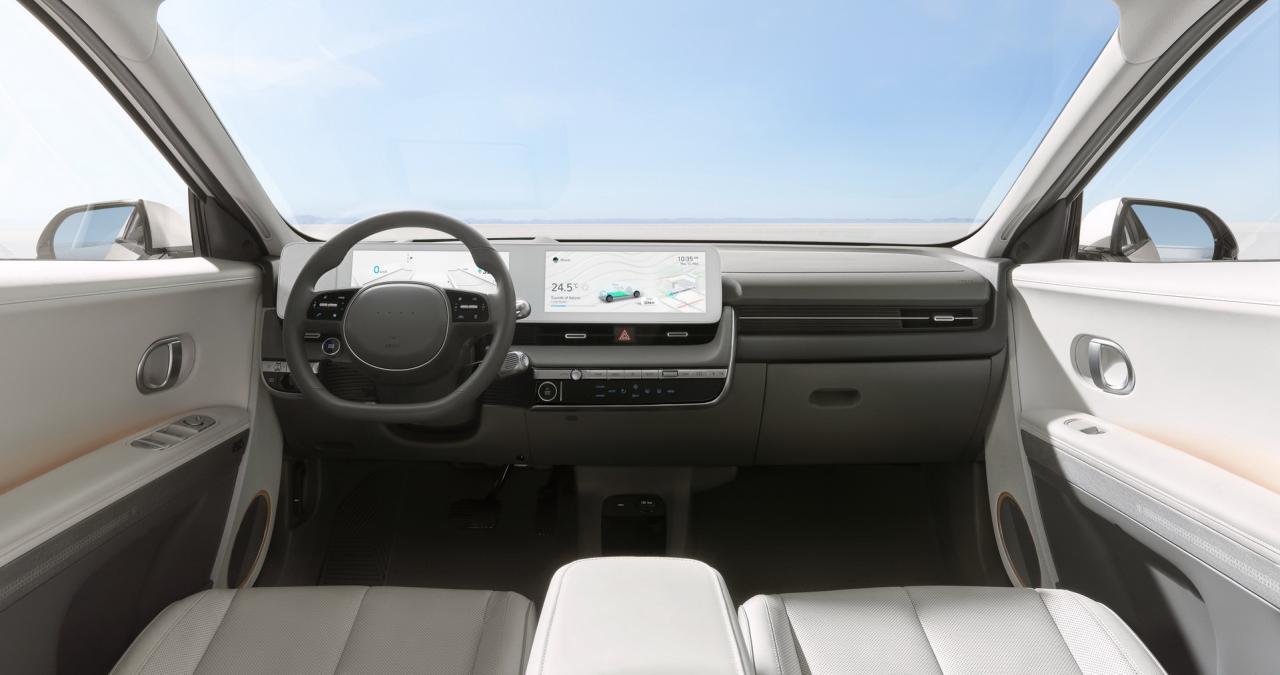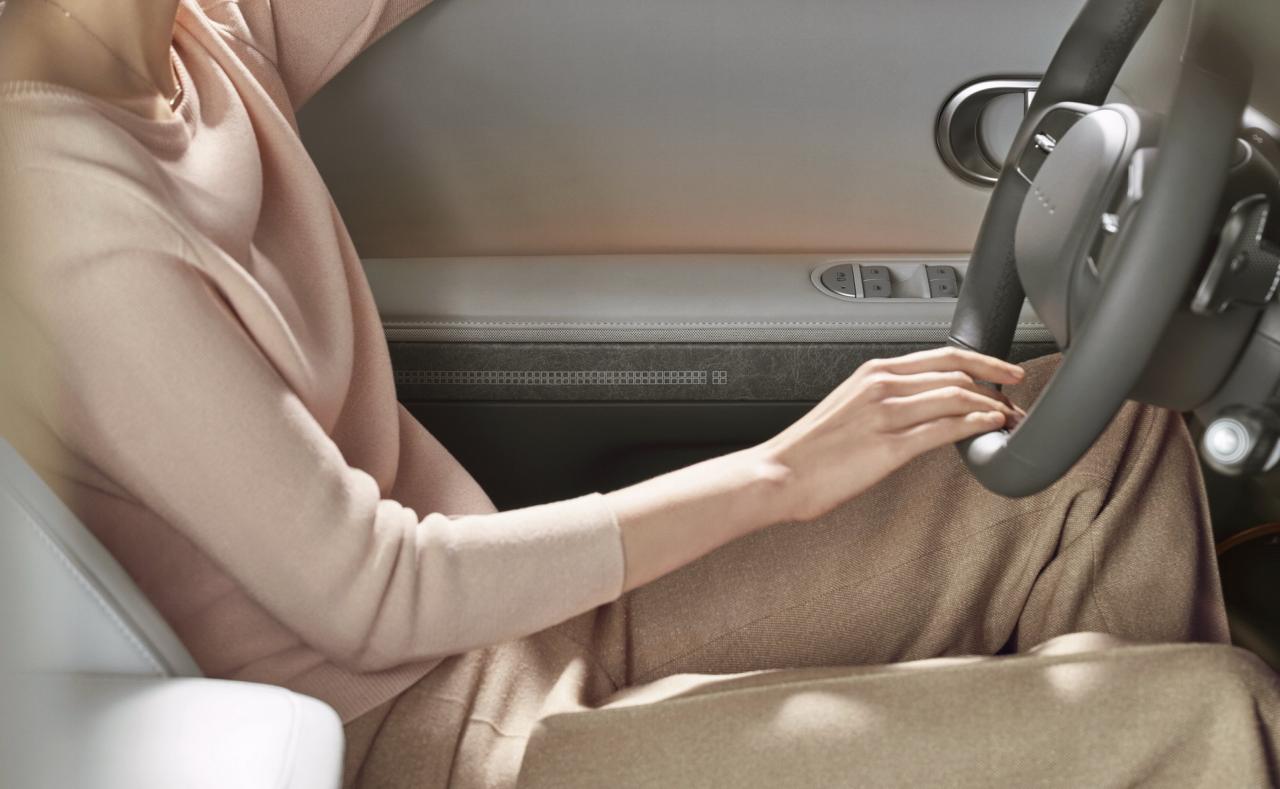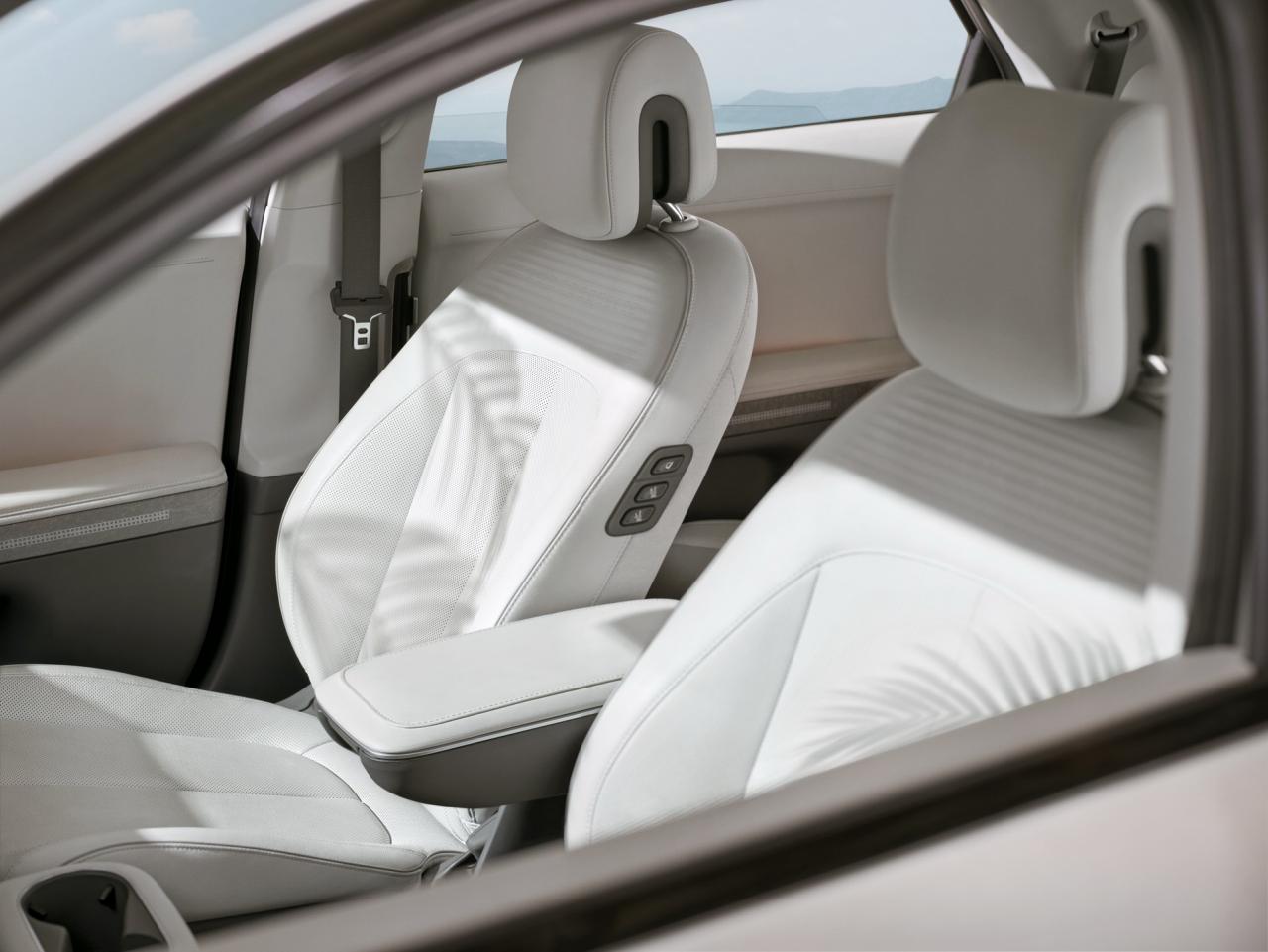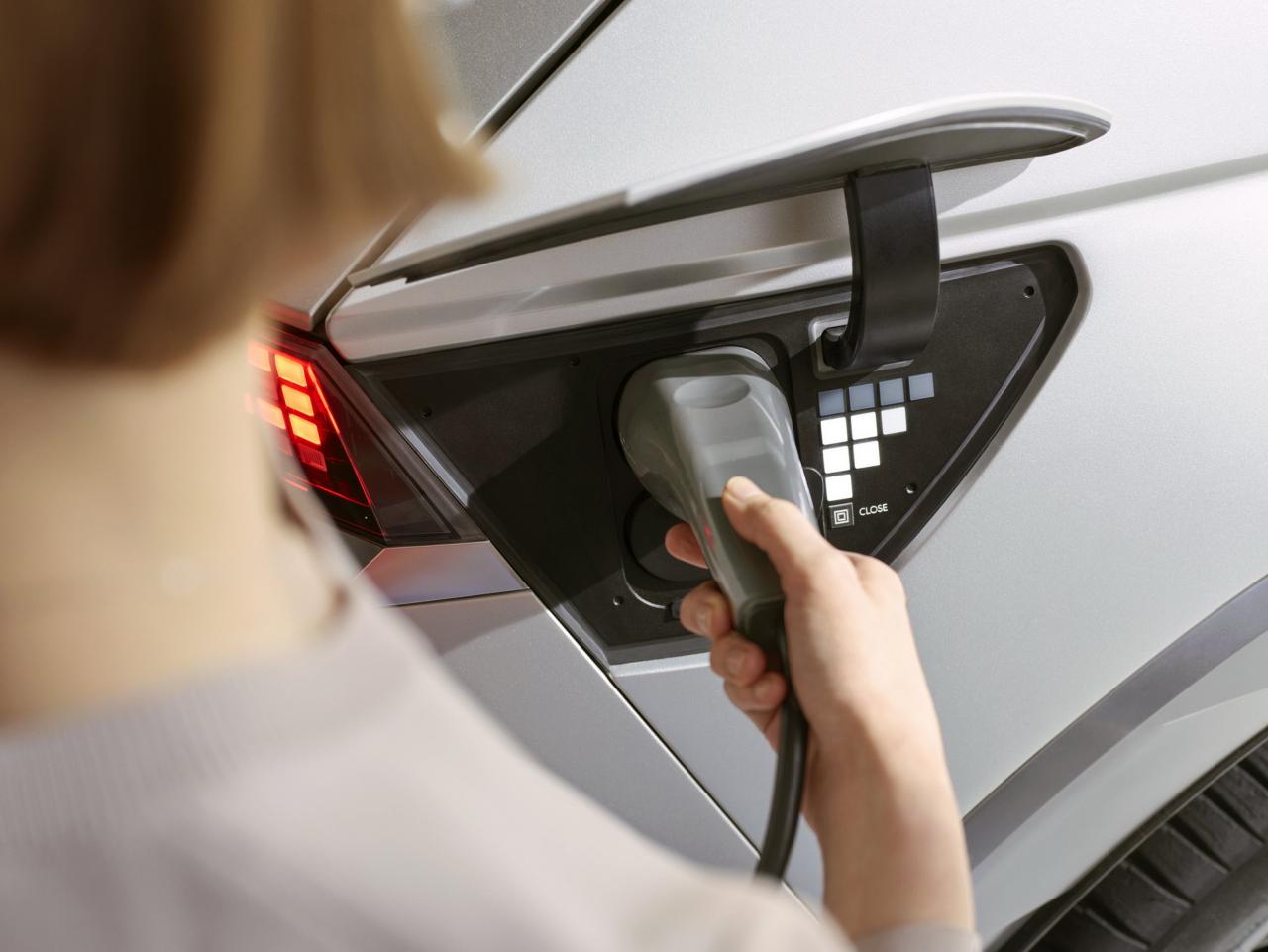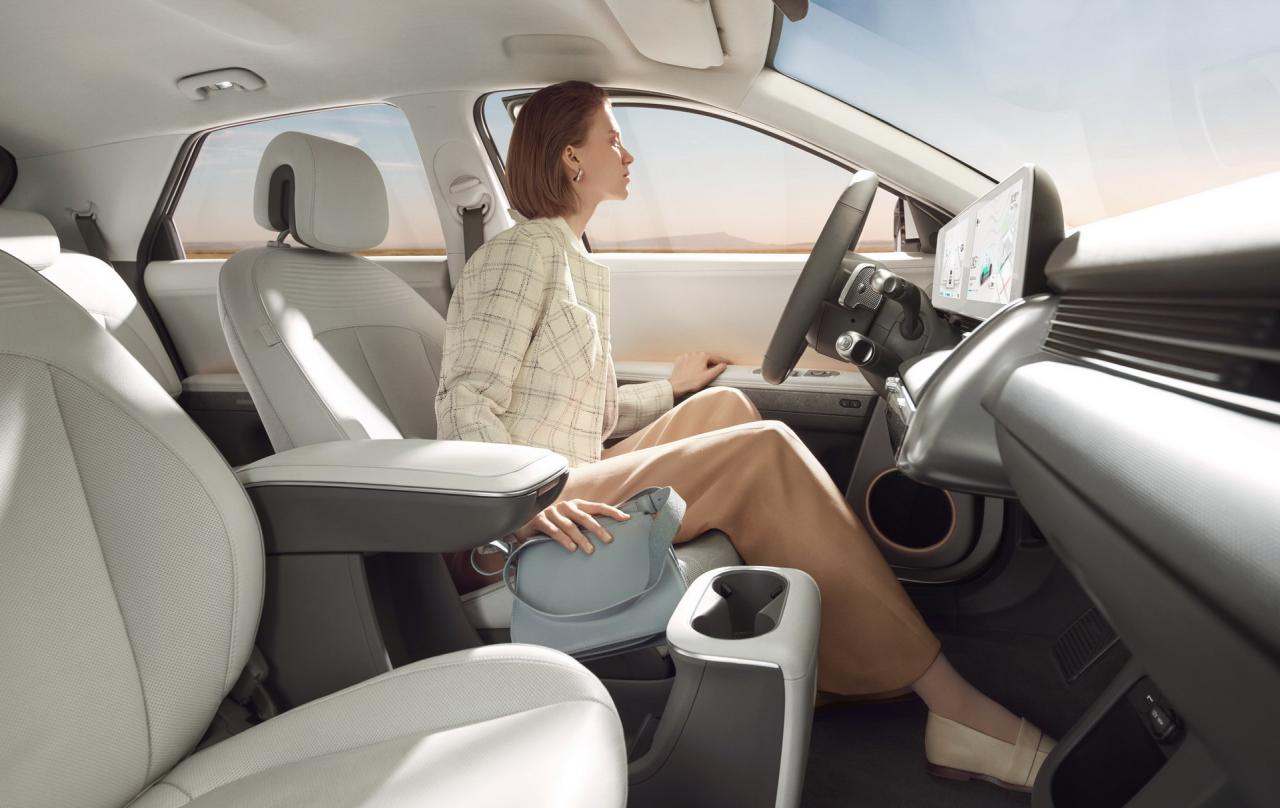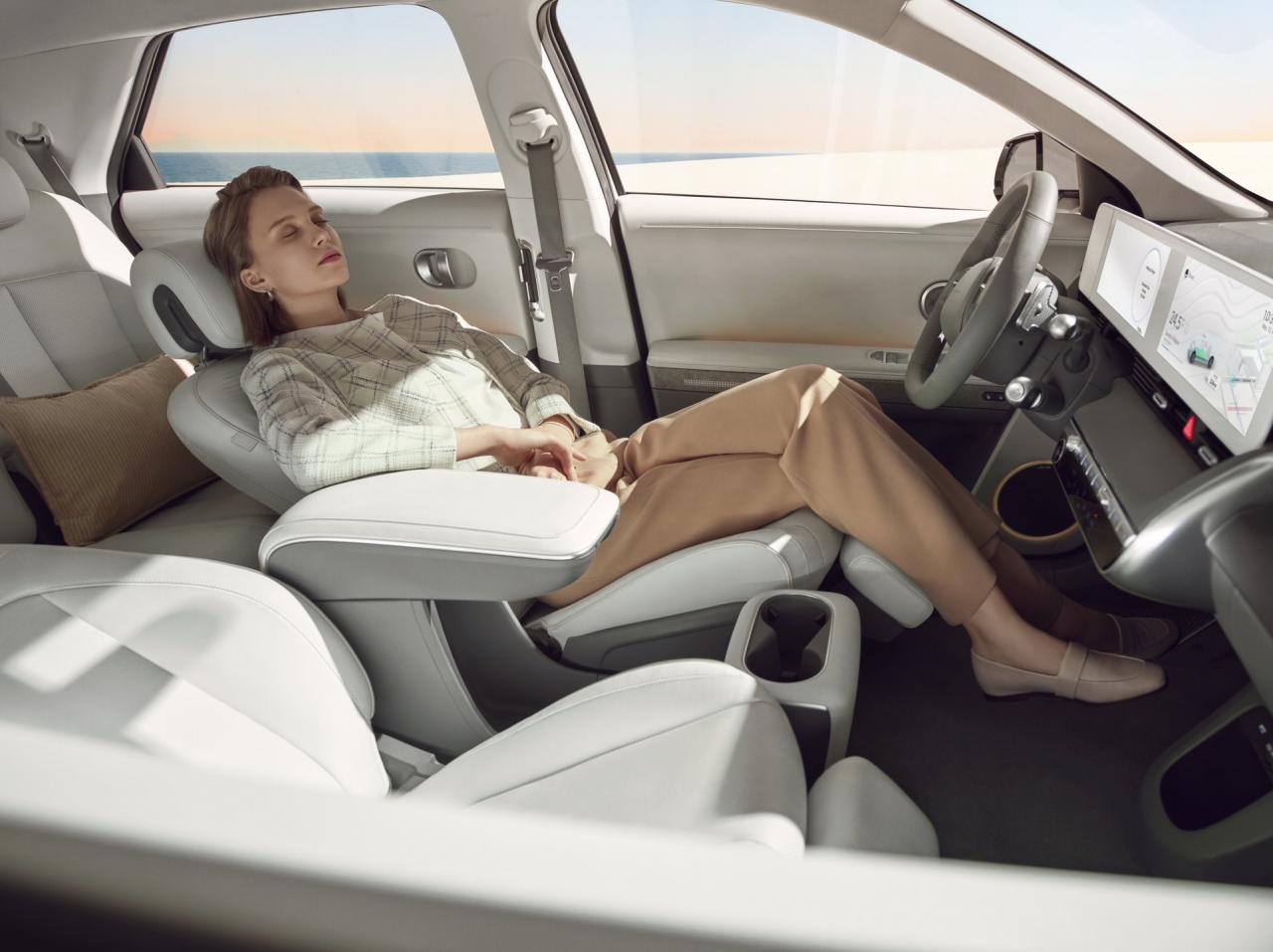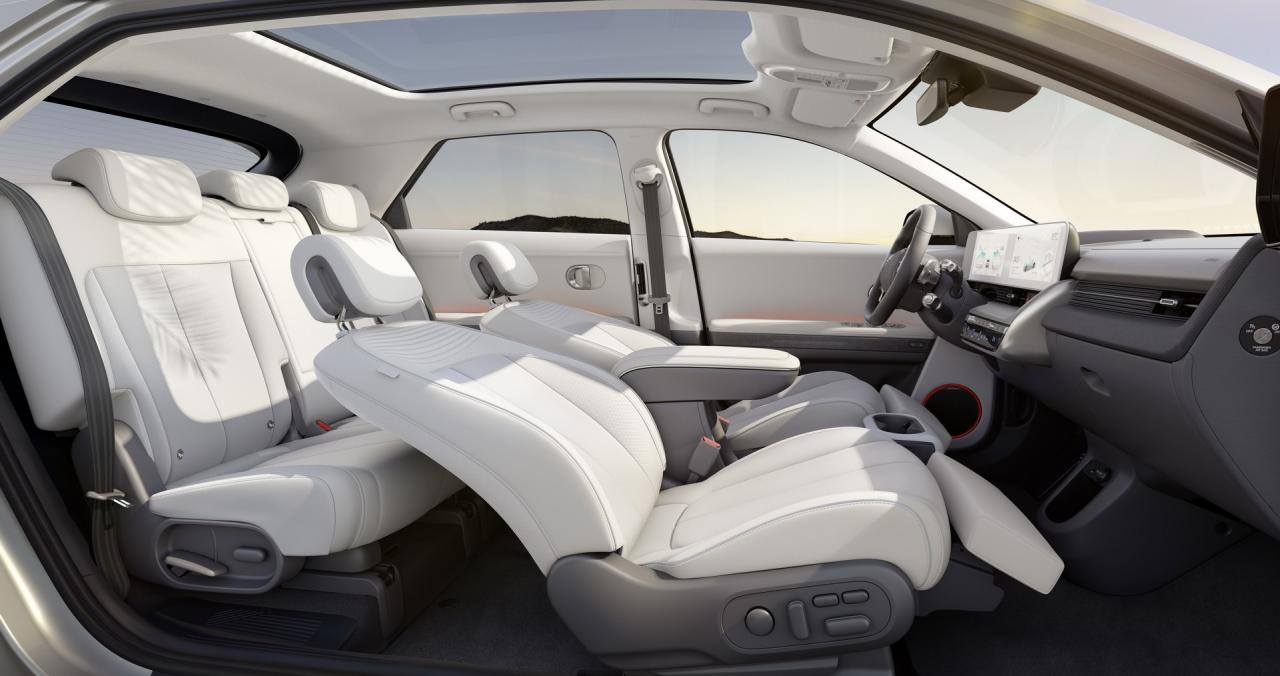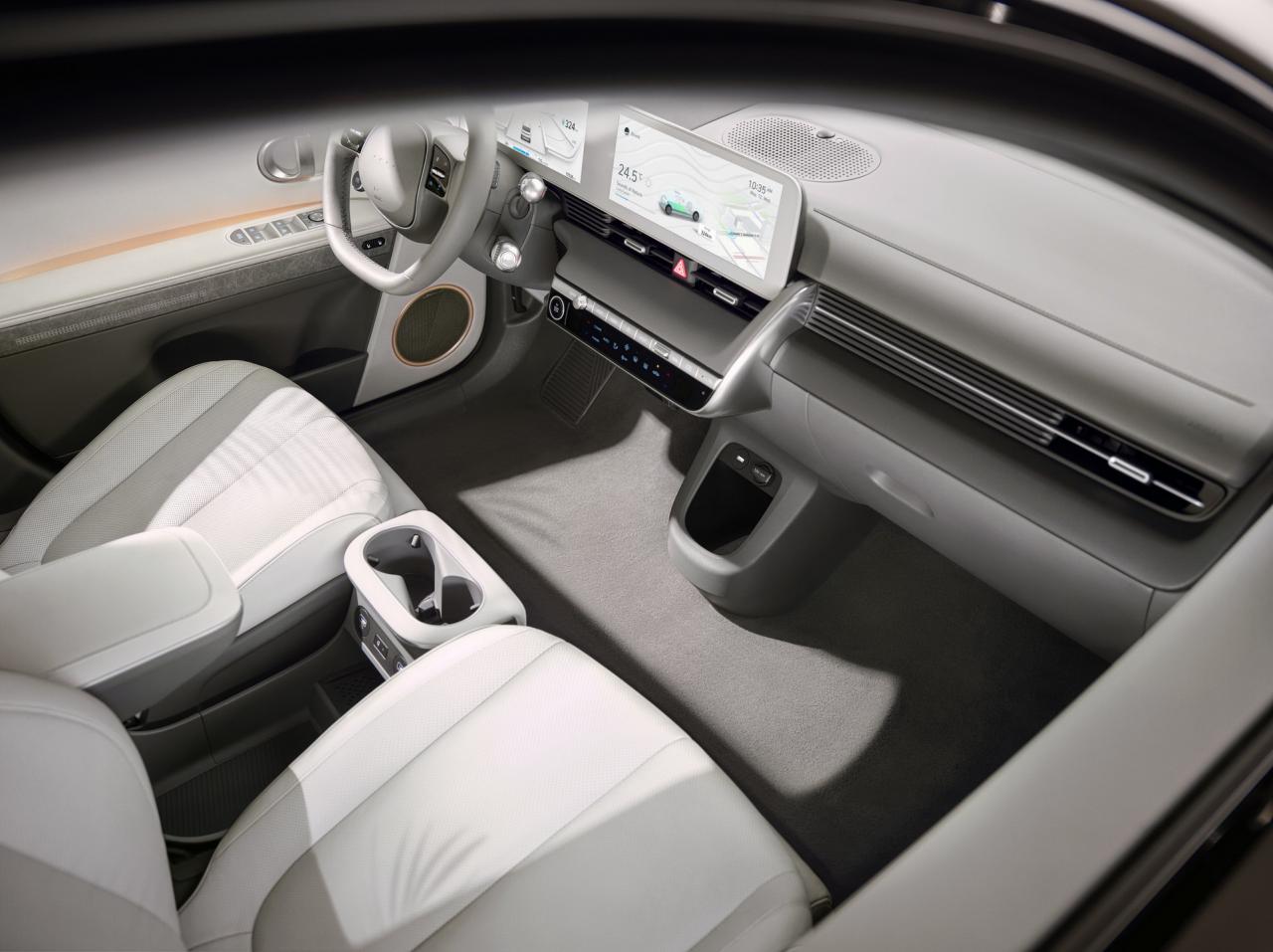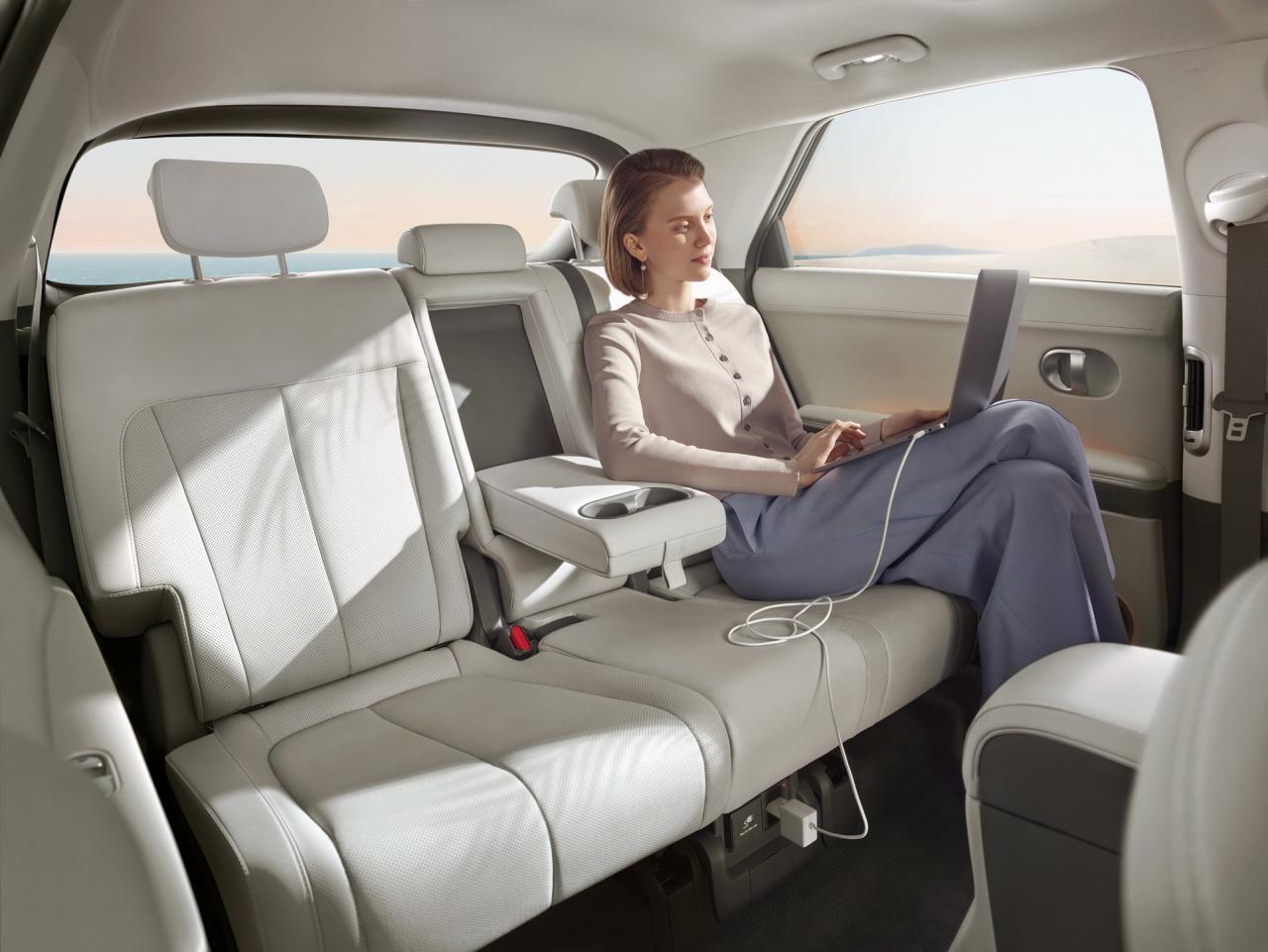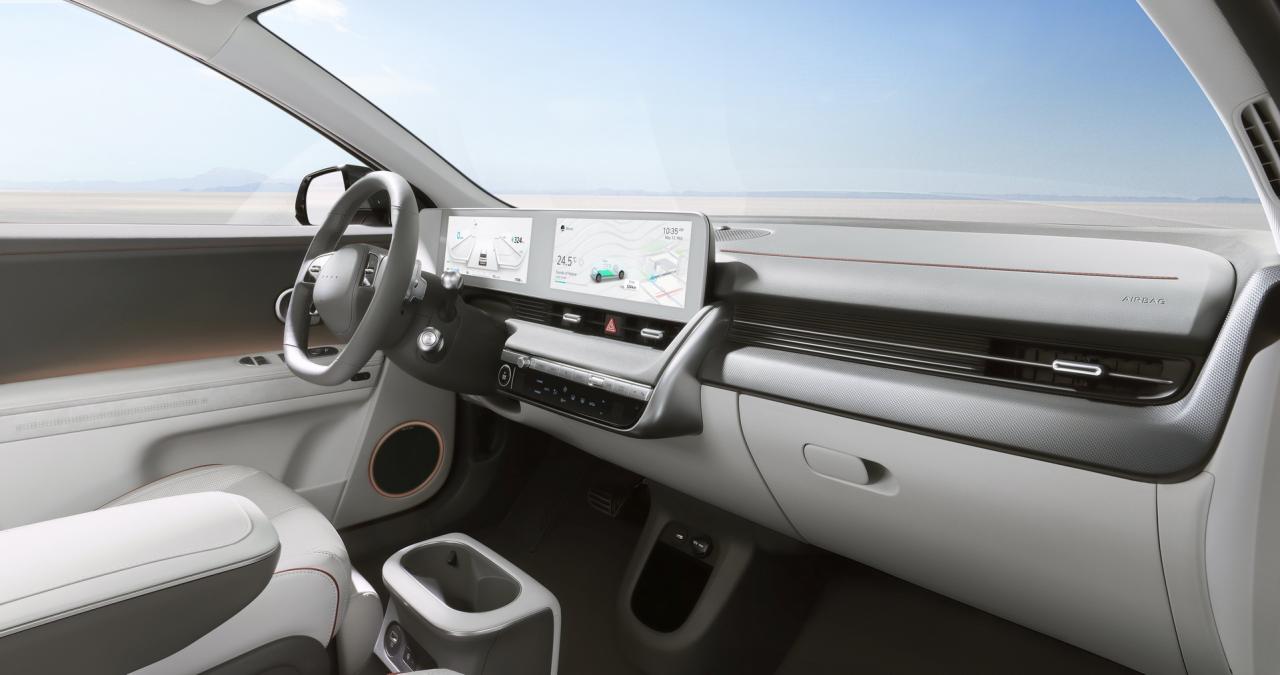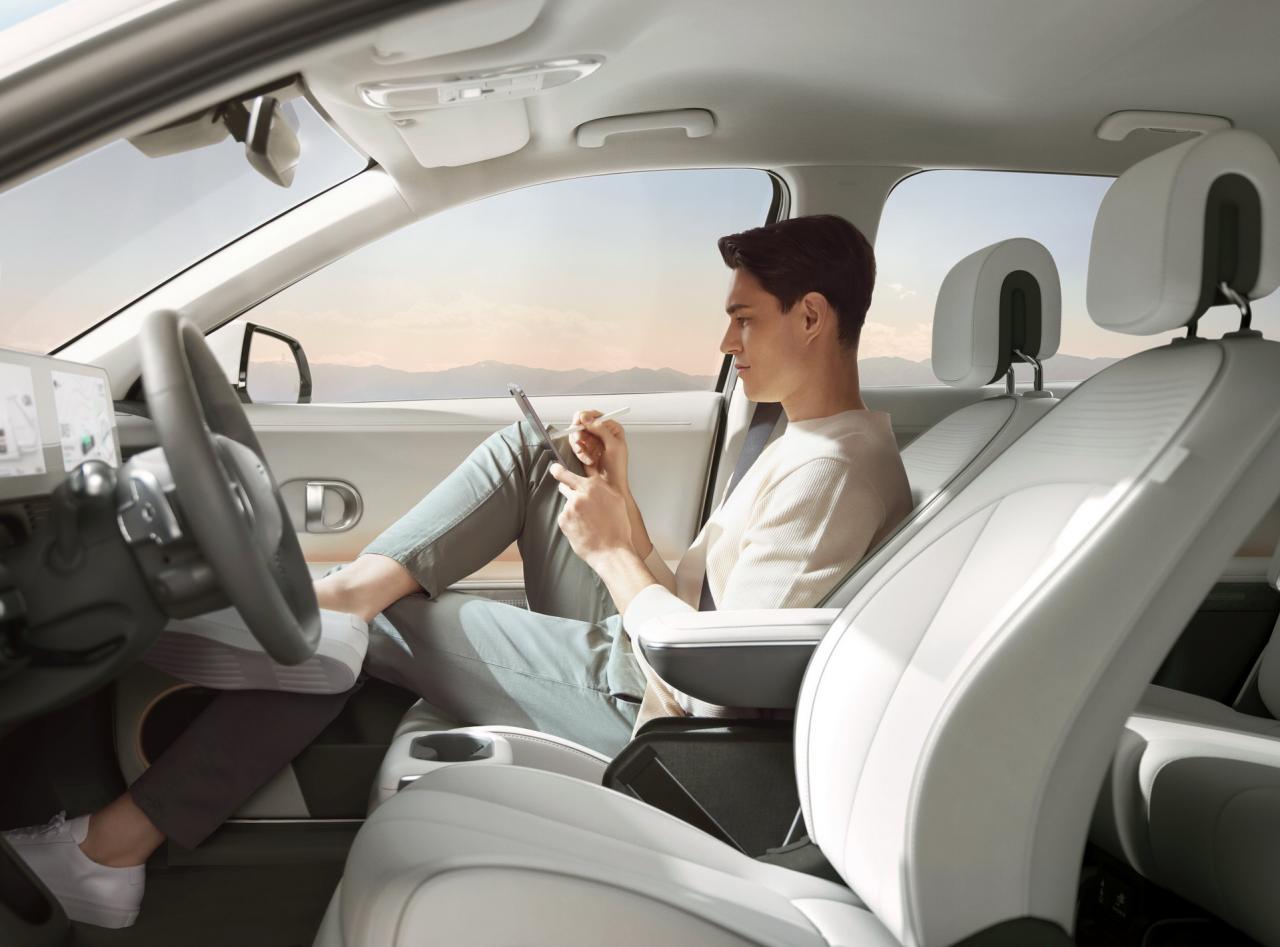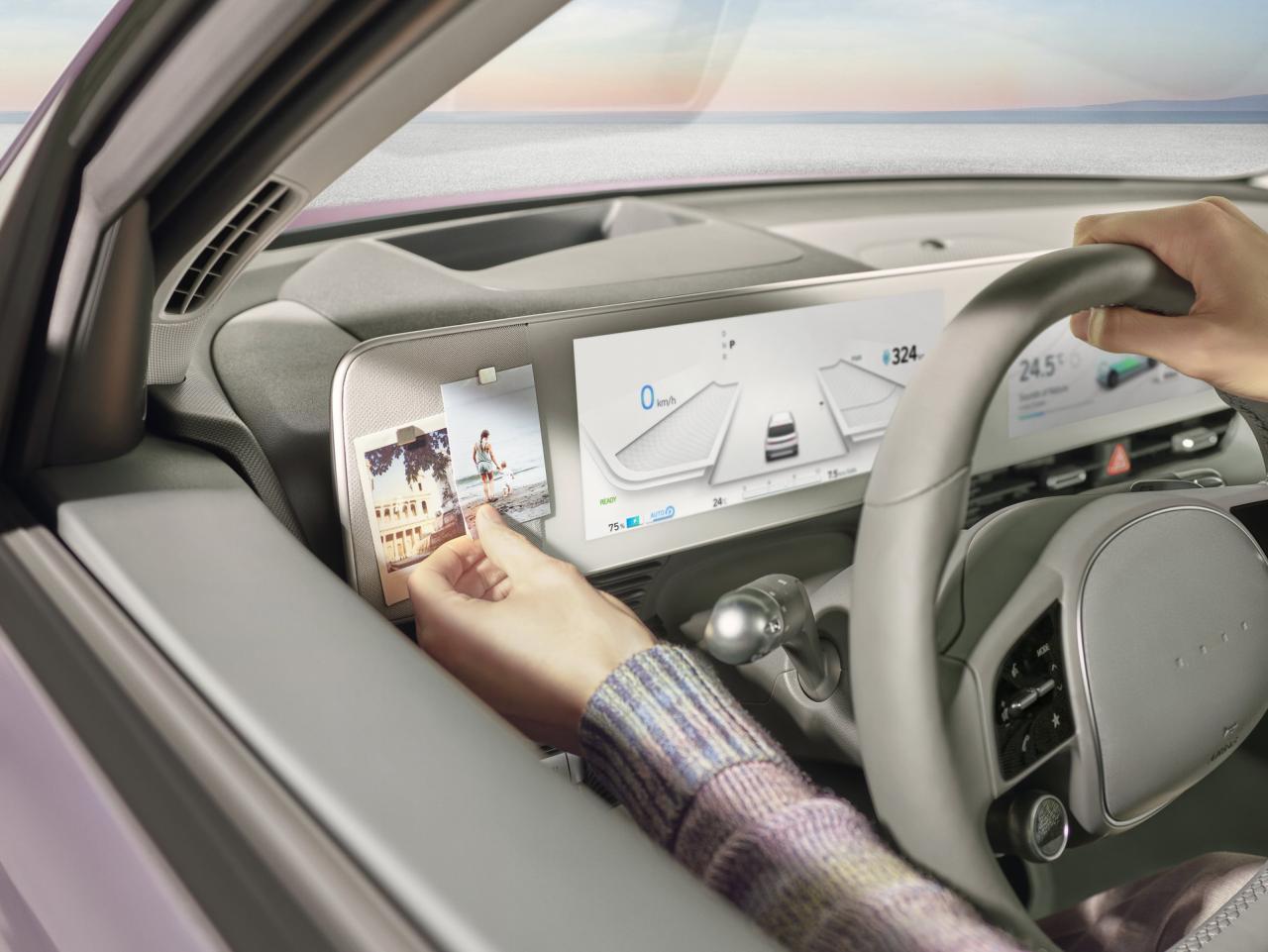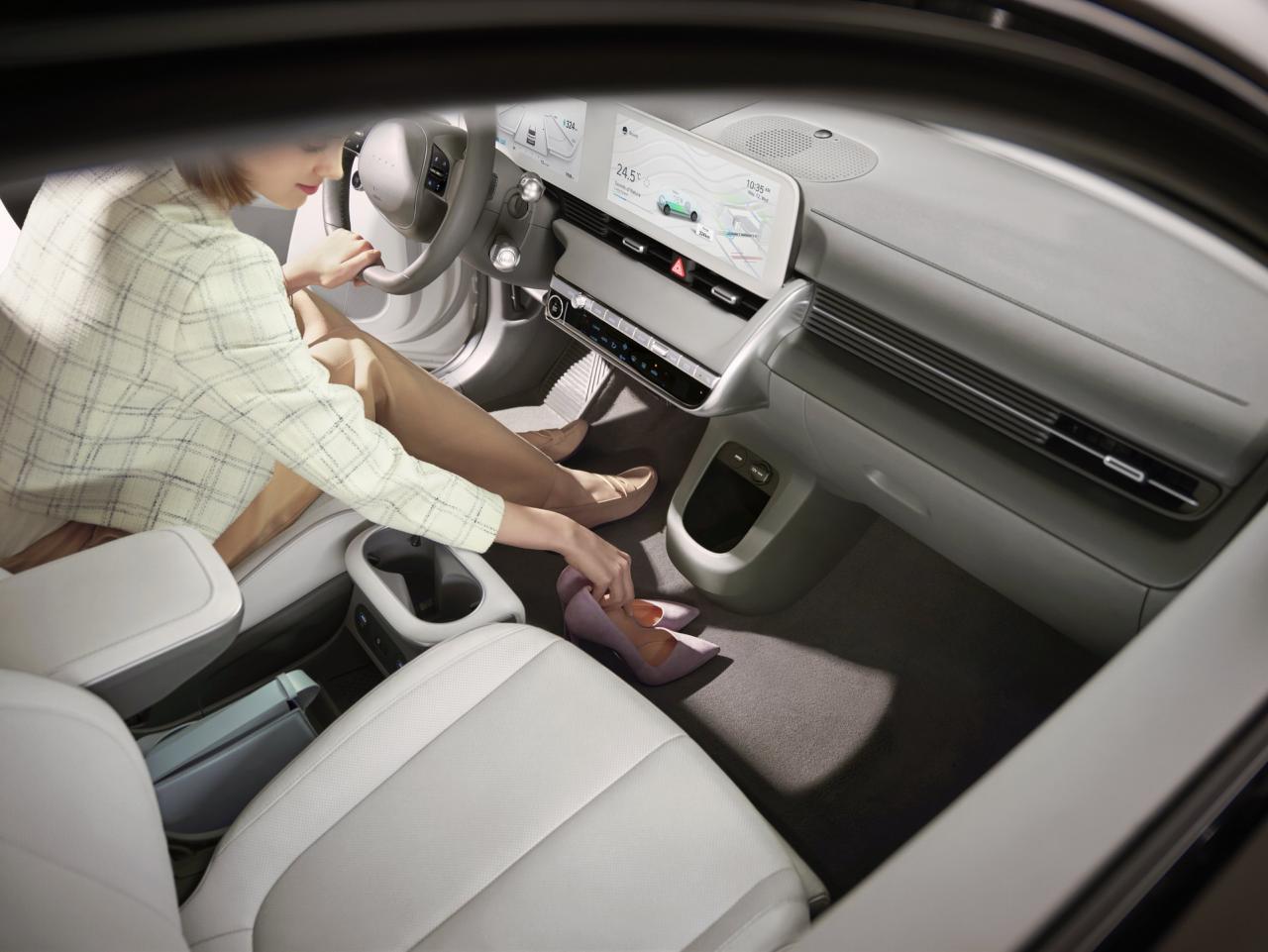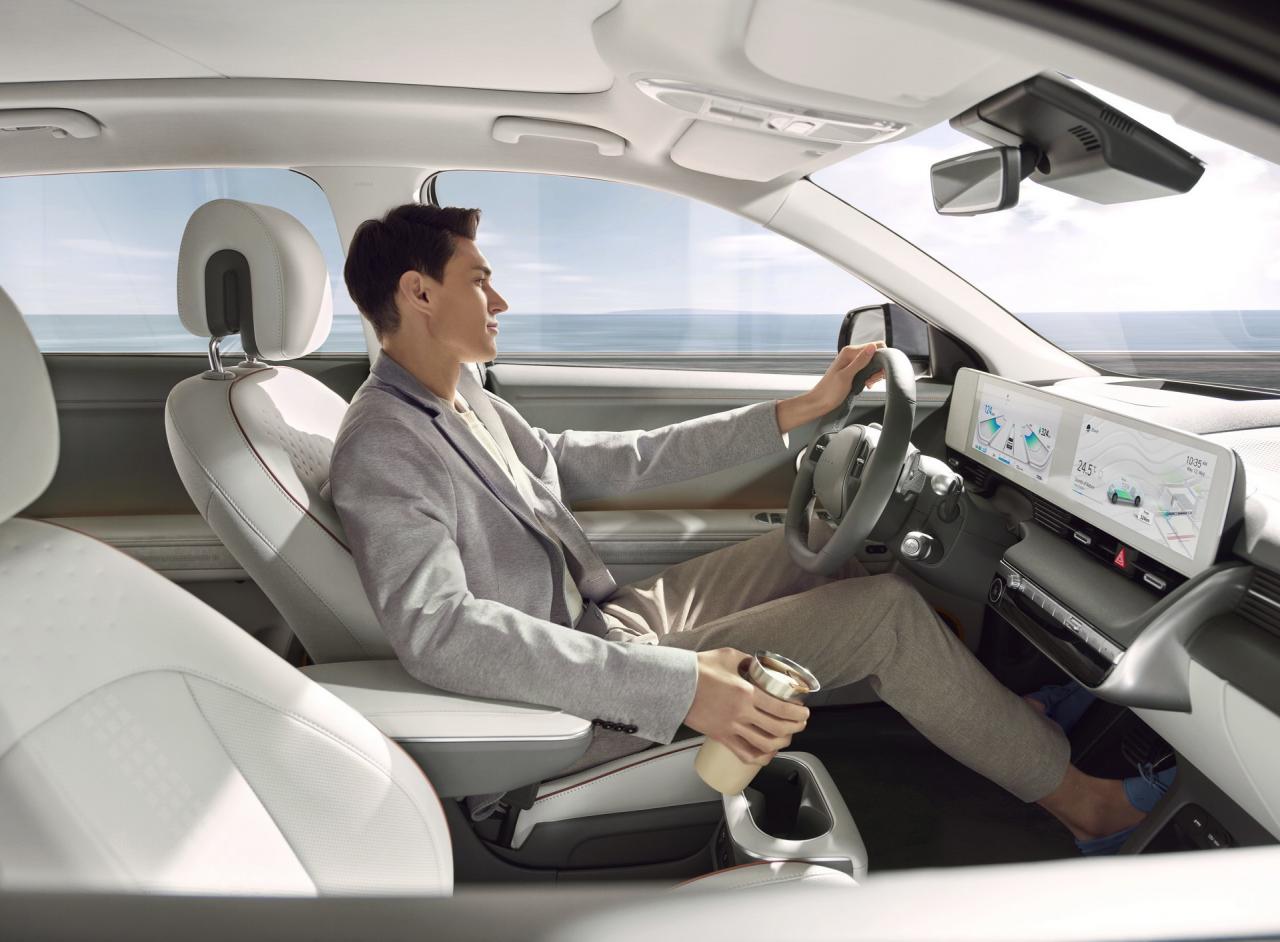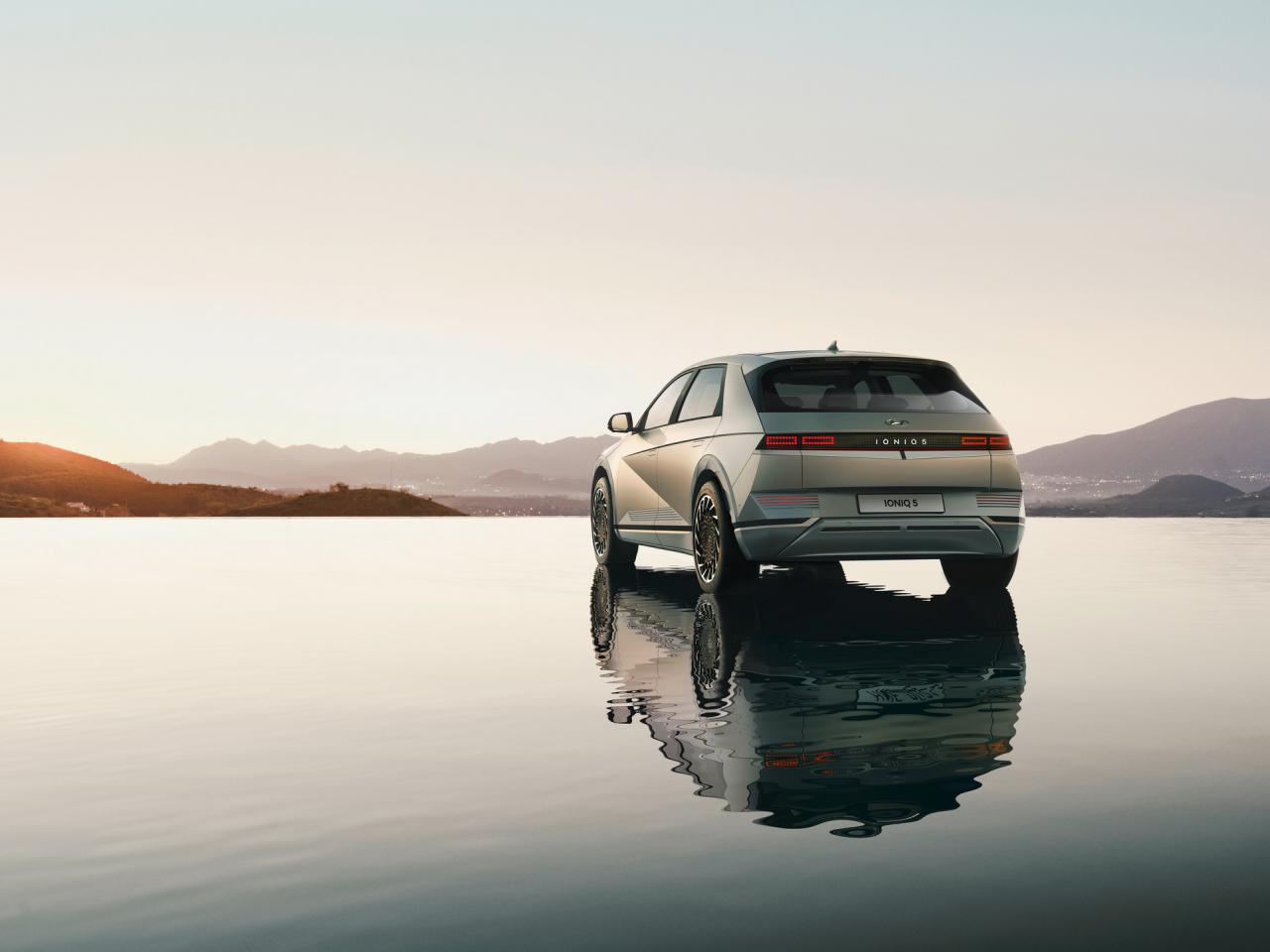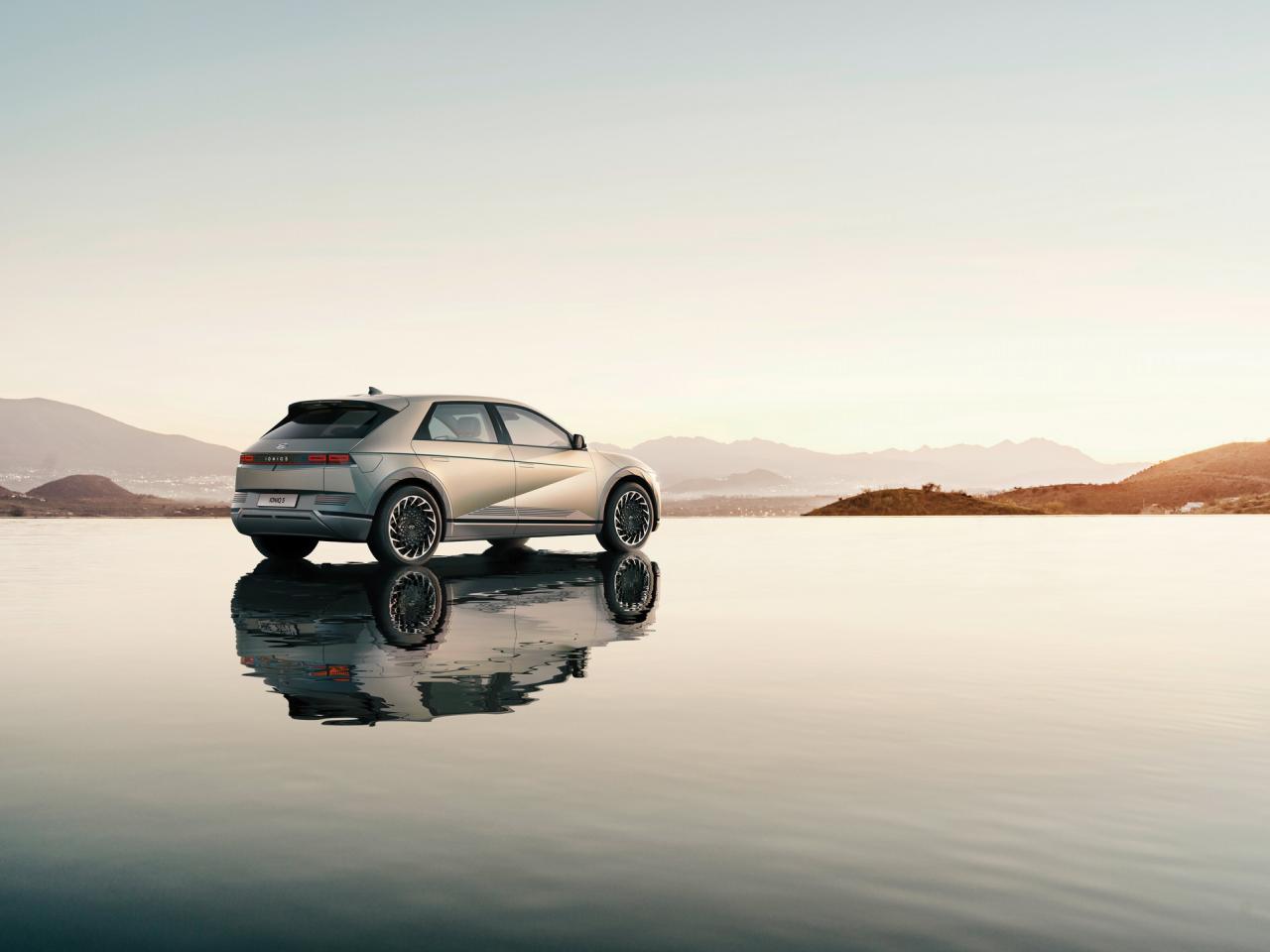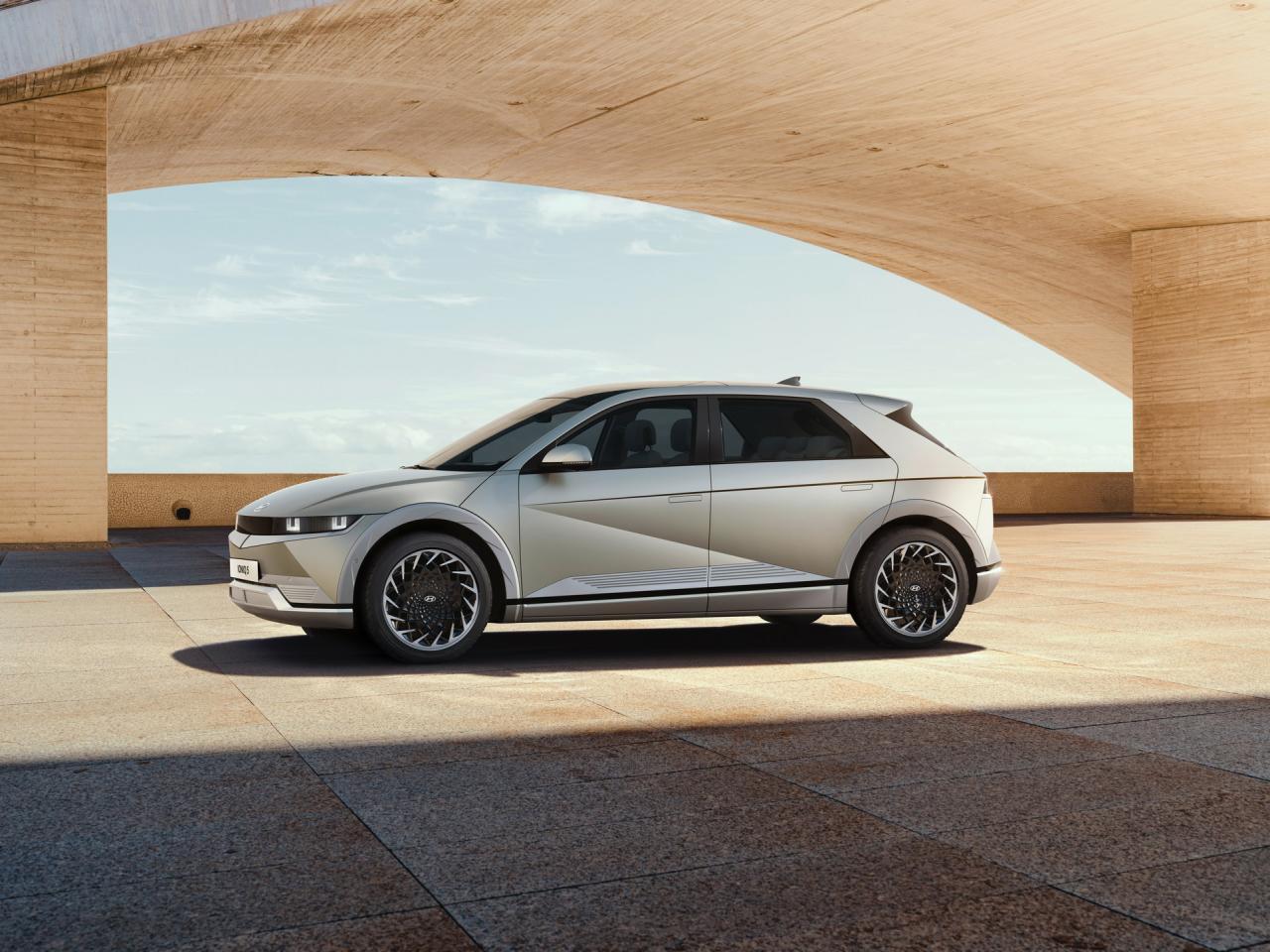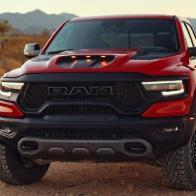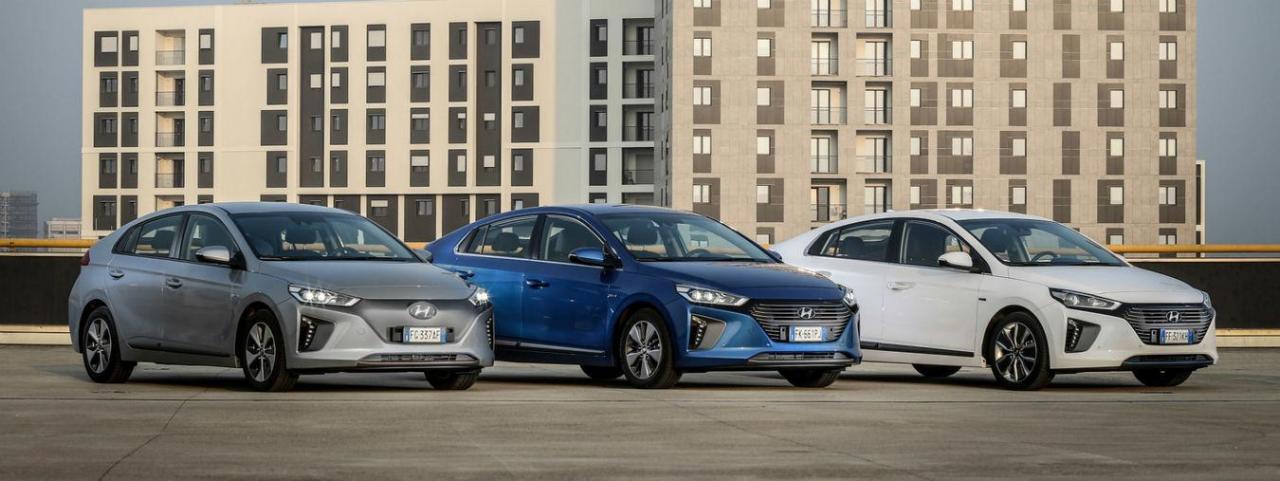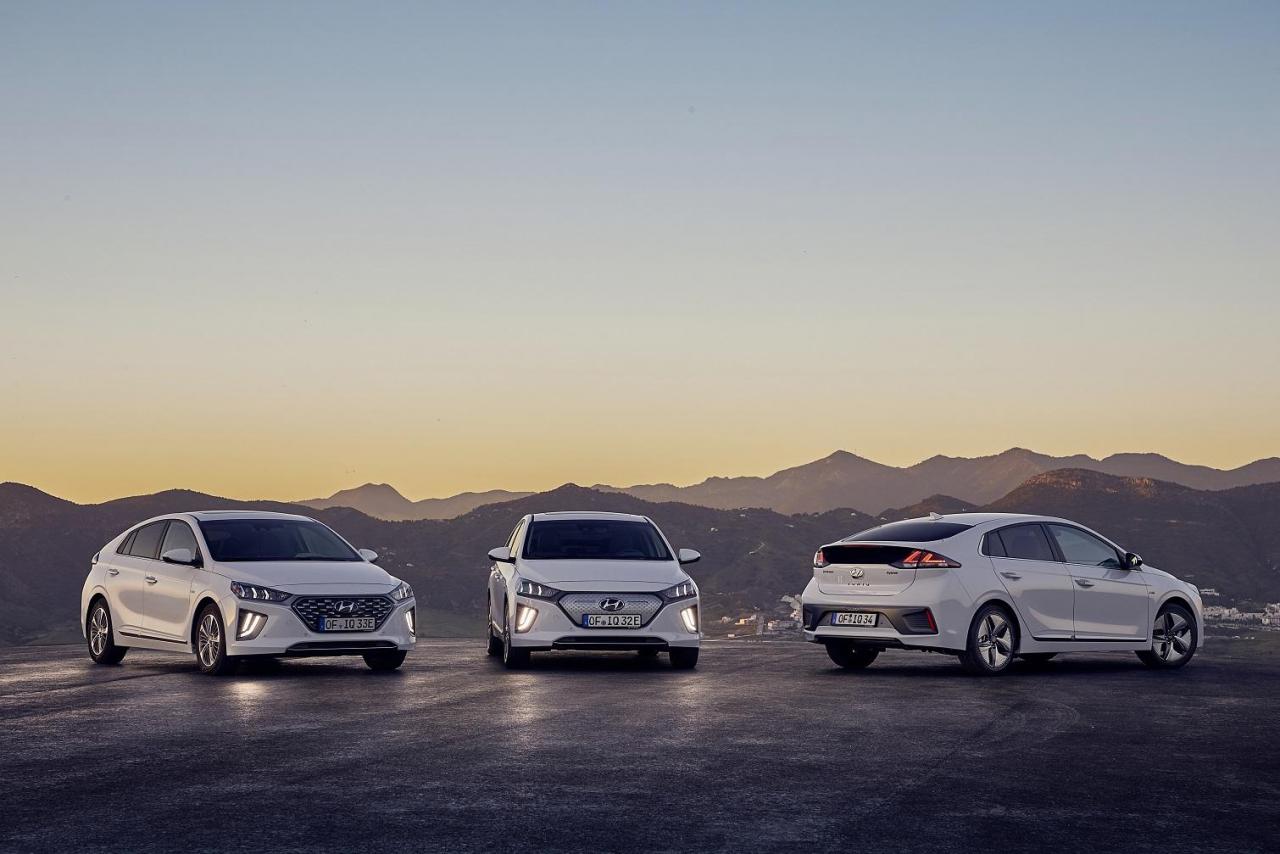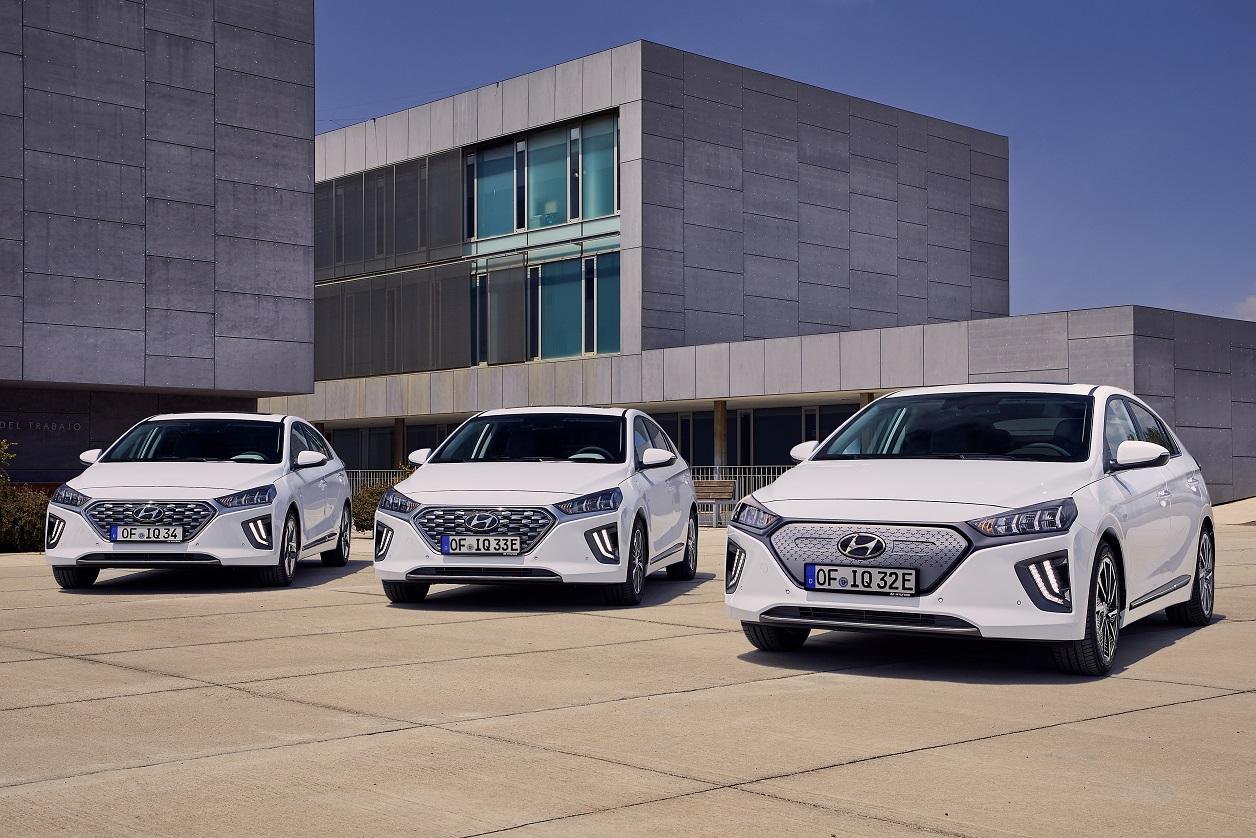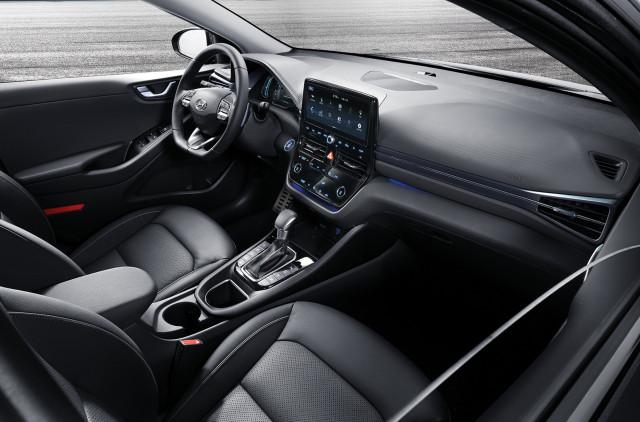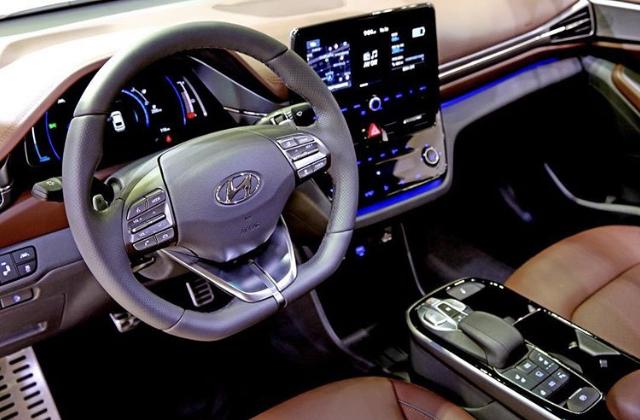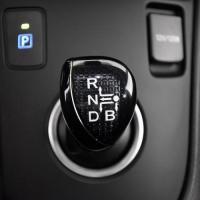Cerca nel Forum
Mostra i risultati del/dei TAG ''ioniq'' .
Trovato 9 risultati
-
Le pinze dei freni colorate di rosso sono un altro dei dettagli di questa versione sportiva, così come gli enormi cerchi in lega da 20 pollici . Puoi anche vedere che lo spoiler a filo con il lunotto ha anche un labbro aggiuntivo, che lo IONIQ 6 standard non ha, e una certa forma a coda d' anatra che fungerà da aerofreno . Per ora si tratta di un mulo che viene testato anche nella lontana Corea del Sud ma che, di sicuro, si è trasferito in Germania per affrontare alcuni test duri ed impegnativi sull'asfalto della pista tedesca per apportare le prime modifiche alla dinamica e alla sistemi di controllo del telaio, delle sospensioni, dello sterzo e dei freni, applicando tutte le conoscenze acquisite durante la messa a punto della IONIQ 5 N, che è ora in vendita. La nuova Hyundai IONIQ 6 N sarà presentata nella seconda metà del 2025 e sarà messa in vendita nel 2026 , ma non sarà molto diversa dal crossover elettrico ad alte prestazioni. Un motore elettrico alimenterà ciascun asse, erogando una potenza massima di 650 CV e alimentato da una potente batteria per offrire almeno 500 chilometri di autonomia con una singola carica. Tra qualche mese vedremo i prototipi di serie mimetizzati, già con un nuovo frontale più aggressivo.
-
Till WartenbergTill Wartenberg, Vice President e Head of N Brand & Motorsport IONIQ 5 N eN1 Cup car utilizza lo stesso sistema di alimentazione elettrico di IONIQ 5 N, la prima EV ad alte prestazioni del marchio N, con una straordinaria accelerazione e una potenza fino a 650 CV, nonché un’elevata capacità di guida intensiva e duratura su circuito. La vettura combina la tecnologia all’avanguardia dell'Electric Global Modular Platform (E-GMP) di Hyundai con un efficace sistema di gestione termica della batteria e un potente sistema di frenata rigenerativa. Come Elantra N1, IONIQ 5 N eN1 Cup è un’auto da corsa di altissimo livello per piloti professionisti che gareggiano nella classe N1, con prestazioni migliorate ad esempio utilizzando pneumatici slick. La nuova classe eN1 sarà introdotta quest’anno e opererà secondo regolamenti aperti, in modo che i team possano competere con diversi pneumatici senza essere limitati a un singolo produttore. Alimentazione Motori: Ant 166 kW / 226 CV, Post 282 kW / 383 CV (Tot: 650 CV) Batteria: 84.0 kWh Inverter: Inverter a due stadi al carburo di silicio Sistema di ricarica 800V, compatibile con 400V Potenza massima di ricarica: 350 kW Tempi di ricarica: 10~80% in 18 minuti (in situazioni ottimali) Sospensioni Ammortizzatori regolabili (due vie) Altezza e campanatura regolabili Freni Pinze forgiate 6P anteriori, 4P posteriori Pneumatici e cerchi Pneumatici slick motorsport da 18” Cerchi forgiati da 18” 11J Esterni Kit aerodinamico motorsport ad alta deportanza e passaruota allargati Sicurezza Roll-cage saldato multipunto a norma FIA (Appendice J) Sedile a guscio, cintura di sicurezza a 6 punti Dispositivo di disattivazione dell’alta tensione Indicatore di avvertimento dell’alta tensione Rivestimento antincendio ad anidride carbonica Posizione della porta di carica spostata Peso totale (kg) 1,970 Kg circa Tecnologie di IONIQ 5 N N e-Shift N Active Sound+ (potenziato) N Grin Boost N Battery Preconditioning Hyundai N Festival promuove lo sviluppo della cultura del motorsport in Corea Per oltre 20 anni, Hyundai ha sponsorizzato e organizzato diverse competizioni, a partire dallo Hyundai Click Speed Festival e dal Korea Speed Festival, fino allo Hyundai N Festival, che ora è diventato la più grande serie di gare con la stessa tipologia di auto per professionisti in Corea. Simile all’attuale classe N1 di Elantra, la classe eN1 è riservata esclusivamente ai professionisti e definisce veicoli da pista che non possono essere guidati su strade pubbliche. La “e” di eN1 si riferisce all’elettrificazione della classe di gara. La prossima stagione segnerà l’ingresso delle gare EV nello Hyundai N Festival e fungerà da fase di test per queste competizioni. eN1 Cup sarà testata e migliorata nel competitivo ambiente del motorsport nella fase Proto. Questa stagione offrirà anche l’opportunità ai team, ai piloti e ai commissari di gara di conoscere e sviluppare la competizione necessarie per queste nuove tipologie di gare. Inoltre, le infrastrutture di ricarica, le misure antincendio e la risposta alle emergenze saranno ulteriormente migliorate in questo periodo. Lo Hyundai N Festival prenderà il via con la gara di apertura all’Inje Speedium il 27 aprile. La classe eN1 avrà le sue prove ufficiali durante il round di apertura, seguite da 10 gare nel quinto round. Il formato della competizione varierà, includendo gare a eliminazione diretta uno contro uno e gare sprint tradizionali, per consentire la sperimentazione di diversi tipi di gara EV. Joon ParkHead of N Brand Management Group
-
Da Autoblog riporto questo render di una nuova piccola elettrica della casa coreana che, se messa sul mercato, dovrebbe costare attorno ai 20mila euro. Sarebbe infinitamente bella ma cxredo sia la solita fake di Autoblog. Mod se ritenete opportuno, cancellate pure
- 3 risposte
-
- ioniq
- hyundai spy
-
(e 3 altri in più)
Taggato come:
-
Il primo modello della sub famiglia Hyundai di vetture elettriche basate sulla piattaforma dedicata e-GMP è la IONIQ 5, derivata dal Concept 45. L’auto, il cui stile pesca a piene mani dal concept, ha diversi primati e spunti interessanti, uno su tutti il sistema di ricarica a 800 V con ricarica dal 10% all’ 80% in soli 18 minuti e la possibilità di equipaggiare l’auto con pannelli solari posti sul tetto per una massima cura dell’ambiente. Altra novità, il trattamento dei LED a mo’ di Pixels: sono ben 256 e fanno tanto concept e tanta scena. IONIQ 5 è enorme: ha un passo di 3 metri, più di quanto offerto dalla gigante Palisade, una lunghezza totale di 4,63 mt, è larga 1,89m e alta 1,60m. Gli interni, che godono del pavimento piatto, sono realizzati per buona parte in materiali riciclati e i sedili sono ampiamente reclinabili e scorrevoli al fine di sfruttare al meglio lo spazio disponibile. In plancia due schermi da 12’’ con effetto vetro. Si può scegliere tra batterie da 58 kWh, 72.6 kWh e se abitate in America anche da 77.4 kWh. A secondo del pack si avrà motore singolo a trazione posteriore o doppio motore e integrale. Specifiche Tecniche Press Release: Next IONIQ: More to come Hyundai’s new IONIQ brand represents the company’s strong commitment to sustainability and innovation. Under the mission of IONIQ brand, ‘Progress electrified for connected living’, Hyundai will offer electric vehicle experiences with a focus on customized, eco-friendly solutions that can fit any lifestyle, delivering the company’s vision ‘Progress for Humanity’. The introduction of IONIQ 5, is the first step in the company's journey of dedicated electric vehicles, moving another step closer towards achieving its clean mobility goals. Following the launch of IONIQ 5, Hyundai will expand its BEV lineup with IONIQ 6, an electric sedan, and IONIQ 7, a large electric SUV. Heralding a new era for EV design IONIQ 5’s progressive design represents a departure from past norms, exploring a new design freedom offered by a dedicated BEV platform. By evoking the daring attitude of Hyundai Pony, the company’s first production car IONIQ 5 highlights Hyundai’s 45-year journey to become a part of customer’s lifestyles, creating a common thread from past to present and future. This is the redefinition of timeless design, a theme that will expand as the IONIQ lineup grows. IONIQ 5’s unique exterior design is characterised by the Pony-inspired profile over a 3,000-mm wheelbase. This extended wheelbase requires a more sophisticated approach to translate this new proportion into a contemporary EV typology. The front of the car is equipped with Hyundai’s first clamshell hood that minimizes panel gaps for optimal aerodynamics. The front bumper is defined by an eye-catching V-shape incorporating distinctive daytime running lights (DRLs) that provide an unmistakable light signature unique to IONIQ 5. These small pixel-like clusters also appear at the rear of the vehicle. On the sides, auto flush door handles provide clean surface styling and enhanced aerodynamic efficiency. The front and rear forms of the vehicle merge together at its doors, offering another example of Hyundai’s ‘Parametric Dynamics’ design first seen on the all-new Tucson. The strong C-pillar shape, inspired by Hyundai’s ‘45’ EV concept, gives IONIQ 5 a commanding presence clearly identifiable from a distance. Aero-optimized wheels further echo the Parametric Pixel design theme and are offered in a super-sized 20-inch diameter, the largest rims ever fitted to a Hyundai EV. These complete IONIQ 5’s perfected proportions, optimized for Hyundai’s E-GMP. The ‘Living Space’ theme runs throughout the interior, most notably embodied by the Universal Island, a moveable center console that can slide back as much as 140 mm. Universal Island, along with the flat floor where the batteries are stored, allows more freedom of movement inside the vehicle. IONIQ 5 is also equipped with electronically adjustable front seats. The seats recline to the optimum angle, offering a weightless feeling for the occupant. Hyundai reduced the thickness of the front seats by 30 percent, providing more space for those seated in the second row. Many of its interior touchpoints - seats, headliner, door trim, floor and armrest - use eco-friendly, sustainably sourced materials, such as recycled PET bottles, plant-based (bio PET) yarns and natural wool yarns, eco-processed leather with plant-based extracts, and bio paint with plant extracts. Customers can choose from nine exterior colors, including five nature-inspired hues exclusive to IONIQ 5. The interior has three color options. A range of power electric systems to suit every customer IONIQ 5 is available with a range of power electric (PE) configurations to fit the mobility needs of every customer, with no compromises on performance. Customers can select from two battery pack options, either 58 kWh or 72.6 kWh, and two electric motor layouts, either with a rear motor only or with both front and rear motors. All PE variations provide outstanding range and deliver a top speed of 185 km/h. At the top of the electric motor lineup is an all-wheel drive (AWD) option paired with the 72.6-kWh battery, producing a combined power output of 225-kWh and 605 Nm of torque. This PE configuration can go from 0 km/h to 100 km/h in 5.2 seconds. When equipped with two-wheel drive (2WD) and 72.6-kWh battery, IONIQ 5’s maximum driving range on a single charge will be around 470~480 km1, according to the Worldwide Harmonized Light Vehicle Test Procedure (WLTP) standard. Ultra-fast battery charging along with innovative Vehicle-to-Load (V2L) function IONIQ 5’s E-GMP can support both 400-V and 800-V charging infrastructures. The platform offers 800-V charging capability as standard, along with 400-V charging, without the need for additional components or adapters. The multi-charging system is a world’s first patented technology that operates the motor and inverter to boost 400- V to 800- V for stable charging compatibility. With a 350-kW charger, IONIQ 5 can charge from 10 percent to 80 percent in just 18 minutes. IONIQ 5 users only need to charge the vehicle for five minutes to get 100 km of range, according to WLTP. IONIQ 5 also provides an innovative V2L function, which allows customers to freely use or charge any electric devices, such as electric bicycles, scooters or camping equipment, serving as a charger on wheels. The V2L function can supply up to 3.6 kW of power. The V2L port is located under the second-row seats, and it can be activated when a vehicle is on. Another V2L port is located at the charging port on the vehicle exterior. Using a converter, customers can charge high-power electric equipment. The outside port provides power even when the vehicle is turned off. Innovative connectivity and driver assistance for safety and convenience IONIQ 5 seamlessly integrates advanced technologies for an enhanced digital user experience. The wide, configurable, dual cockpit features a 12-inch, full-touch infotainment screen and hoodless 12- inch digital gauge cluster that can be customized to meet customers’ needs. For the first time in Hyundai, IONIQ 5 features an Augmented Reality Head-Up Display (AR HUD), essentially turning the windshield into a display screen. IONIQ 5 is also equipped with the next level of Hyundai SmartSense, advanced driver assistance system, ensuring the highest levels of safety and convenience on the road. IONIQ 5 is the first Hyundai model to offer Highway Driving Assist 2 (HDA 2). Other driving assistance systems include Forward Collision-Avoidance Assist (FCA), Blind-Spot Collision-Avoidance Assist (BCA), Intelligent Speed Limit Assist (ISLA), Driver Attention Warning (DAW), High Beam Assist (HBA), and more. IONIQ 5 will be available in selected regions starting in the first half of 2021. IONIQ 5 Specifications: ※ Editor’s note: The vehicle specifications and features in this press release may vary depending on country/region. Share Share IONIQ 5 Additional Details: Design & Sustainability IONIQ 5’s progressive design language drew inspiration from Hyundai’s ‘45’ EV concept, which debuted at 2019 International Motor Show Germany. Guided by Hyundai’s ‘Sensuous Sportiness’ design identity, ‘45’ featured a monocoque-style body and a futuristic interior designed for electrification and autonomous technologies. IONIQ 5 follows suit but goes one step further, offering a bridge to the future of electric mobility that is technologically advanced, eco-friendly and plugged into today’s customers’ needs. Exterior featuring unique proportions and the longest wheelbase in the segment IONIQ 5’s unique exterior design is characterised by clean and sharp lines, creating a sleek and sophisticated look. The BEV’s precisely modelled surfaces and shapes give it an angular, almost geometric appearance. In addition, Hyundai’s designers integrated cutting-edge Parametric Pixel lights on the front and rear. This unique design element signifies Hyundai’s intent to fundamentally reinvent electric mobility with an EV-specific design that will carry over to future IONIQ models. IONIQ 5’s crossover body type achieves unique proportions and short overhangs due to its elongated wheelbase. Measuring 4,635-mm long, 1,890-mm wide and 1,605-mm tall on a 3,000-mm wheelbase, IONIQ 5 offers D-segment-like space in a midsize CUV. Customers can choose from nine exterior colors, including five nature-inspired, new hues exclusive to the model. These include two options with a Matte finish: the hero color Gravity Gold Matte and Shooting-Star Gray Matte, along with Digital Teal-Green Pearl, Mystic Olive-Green Pearl and Lucid Blue Pearl. Other available exterior colors include Atlas White, Galactic Gray Metallic, Cyber Gray Metallic and Phantom Black Pearl Spacious, customizable interior is a home away from home IONIQ 5 sets itself apart from other midsize CUVs, especially those with internal combustion engines and conventional steer-by-wire systems, because the E-GMP enables a flat floor where the model’s batteries are stored, allowing for innovative interior design and extra legroom. IONIQ 5’s 3,000-mm wheelbase, which is 100-mm longer than Hyundai’s flagship SUV Palisade, offers spaciousness of a large passenger car in a midsize CUV. The long wheelbase allowed Hyundai designers to apply a ‘Living Space’ theme to the interior, rather than a conventional car design theme. The Universal Island moveable console complements the simple center fascia with gear selector located behind the steering wheel. The sliding console allows passengers to not only enjoy more flexibility, but also freely enter and exit the cabin on either side when parked in a narrow spot. Second-row passengers also can enjoy center console features, such as cup holders, a 15 W fast wireless phone charger and USB ports. Universal Island truly redefines the center console, offering greater functionality than a static storage box. The vision roof of IONIQ 5 provides the interior with a greater sense of openness as IONIQ 5’s ceiling consists of one large glass panel without any support materials. IONIQ 5 provides 531 liters of trunk space, which increases up to almost 1,600 liters when the second-row seats are fully folded. For added versatility, the second-row seats can slide forward up to 135 mm and also be folded in a 6:4 ratio. Meanwhile, customers can enjoy additional storage space with a front trunk that offers as much as 57 liters of capacity2, which is particularly useful for longer journeys, when extra luggage is carried. Adjacent to the digital gauge cluster is a metal insert that can accommodate a multi-purpose tray holder. IONIQ 5’s infotainment system is the first to integrate a new design theme called Jong-e Graphic User Interface (GUI) that offers various interior ambience settings, such as soft, delicate and exuberant. Customers can stay warm during the winter months by taking advantage of the heated steering wheel and heated front seat functions. Customers can choose from three interior color options. The base pack includes Obsidian Black and Dark Pebble Gray/Dove Gray, while the optional color pack offers Dark Teal/Dove Gray. Sustainable, eco-friendly EV features accommodate lifestyles without limits IONIQ 5’s demonstration of environmental responsibility doesn’t stop with electrification. Sustainability is at the center of IONIQ’s brand vision, which can be found throughout IONIQ 5 in eco-friendly materials and nature-inspired colors. Many of its interior touchpoints - seats, headliner, door trim, floor and armrest - use eco-friendly, sustainably sourced materials, such as recycled PET bottles, plant-based (bio PET) yarns and natural wool yarns, eco-processed leather with plant-based extracts, and bio paint with plant extracts. IONIQ 5 can also be equipped with an eco-friendly solar roof, which supports the vehicle’s electric power source by collecting energy and transferring it to the battery pack, improving efficiency. The solar roof can prevent battery discharge while providing an additional driving range Performance IONIQ 5 is available with a range of power electric (PE) configurations to fit the mobility needs of every customer, with no compromises on performance. At the top of the electric motor lineup is an all-wheel drive (AWD) option paired with the 72.6-kWh battery, producing a combined power output of 225-kWh and 605 Nm of torque. This PE configuration can go from 0 km/h to 100 km/h in 5.2 seconds. When AWD option is paired with the 58-kWh battery, this dual-motor layout can go from 0 km/h to 100 km/h in 6.1 seconds. The single-motor layout with 160-kW rear motor (125-kW in combination with the 58-kWh battery) offers 350 Nm of torque and two-wheel drive (2WD). When paired with the 72.6-kWh battery, this PE can accelerate from 0 km/h to 100 km/h in 7.4 seconds. When paired with the 58-kWh battery, it can accelerate from 0 km/h to 100 km/h in 8.5 seconds. In addition, IONIQ 5 can tow a trailer with a capacity up to 1,600 kg. Connectivity for the ultimate in-car experience Hyundai is offering the latest version of its upgraded Bluelink® connected car services that deliver a range of new features and allows customers to control their car with their smartphone or voice to make their drive more convenient and enjoyable. New Bluelink features include Connected Routing, Last Mile Navigation and a new User Profile feature. The Bluelink app displays the vehicle’s range, battery state and charging times when plugged into public or private charging points. Customers can access an advanced battery management system in order to select charging times that best fit their schedule or their budget by making the most of off-peak electricity rates. With the new cloud-based Connected Routing feature, driving routes are calculated on a powerful server inside the Bluelink cloud environment. This ensures more accurate traffic forecasting, more precise times of arrival, and more reliable route recalculation. With the all-new IONIQ 5, the database has been increased to show more charging stations on the map, showing availability and estimated charging time. By clicking on the station icon on the map, users can see whether AC, DC or high-powered charging, such as IONITY, is available. Other Bluelink-enabled features include: Remote Profile Management stores selected vehicle settings in the Bluelink cloud, with the ability to remotely update and push back to the vehicle, personalized to driver preferences such as individual driver settings for seating position Vehicle Status Notifications inform customers if the vehicle is left with doors unlocked or windows open With Remote Charging, IONIQ 5 drivers can start and stop charging with the push of a button on their smartphone app. During colder months, Remote Climate Control allows users to schedule pre-heating of IONIQ 5. Not only does this ensure comfort for occupants during the drive, but it also saves battery power that would otherwise be needed to heat the vehicle on the road. IONIQ 5’s Dynamic Voice Recognition system accepts simple voice commands to conveniently control cabin A/C, radio, hatch opening/closing, heated steering wheel, heated/cooled seats and other functions. The system can also assist with various points of interest (POI) and weather status updates. IONIQ 5 also features a premium Bose sound system. Its eight speakers, including a subwoofer, are strategically placed throughout the vehicle for a high-quality listening experience. Head-Up Display with AR technology For the first time in Hyundai, IONIQ 5 features an Augmented Reality Head-Up Display (AR HUD), essentially turning the windshield into a display screen. Drivers can choose to use AR technology to project relevant information, such as navigation, advanced safety and the car’s surroundings, to their line of sight across the windshield. This allows drivers to process information quickly while keeping their attention on the road ahead. Driver assistance system ensures highest levels of safety and convenience IONIQ 5’s Highway Driving Assist 2 (HDA 2) makes highway driving more convenient. Using front view camera, radar sensors and navigation data, HDA 2 works to control the vehicle speed and following distance, while keeping the vehicle centered in its lane. It can also assist the driver when changing a lane. Forward Collision-Avoidance Assist (FCA) can detect a vehicle, pedestrian or cyclist and can help avoid a collision with any one of them. It includes Junction Turning, Junction Crossing and/or Lane-Changing Oncoming. FCA with Junction Turning activates the brakes if it detects oncoming traffic when the driver is turning left at an intersection. FCA with Junction Crossing senses vehicles approaching from the side when the driver is going straight through an intersection. FCA with Lane-Change Oncoming makes switching lanes safer. If FCA senses an approaching car that has crossed the center line when the driver is changing lines, it automatically assists with avoidance steering, if there is no danger of secondary accidents. If a potential secondary accident is detected, FCA will only produce a warning. Other semi-autonomous driving features include Intelligent Speed Limit Assist (ISLA), which adjusts vehicle speed to match the speed limit, and High Beam Assist (HBA), which automatically turns high beams on and off to avoid blinding oncoming drivers. IONIQ 5 has several driver attention-related functions to ensure safety at all times by detecting if the driver is drowsy or distracted. Driver Attention Warning (DAW) displays the driver’s attention level and provides a warning when signs of driver inattentiveness are detected. DAW sounds a warning if the vehicle remains stopped for a long period of time (such as at a traffic signal) and the driver doesn’t react quickly enough when the vehicle ahead starts moving. Several functions work in tandem to help avoid collisions in a variety of driving situations. Blind-Spot Collision-Avoidance Assist (BCA) helps avoid collisions at the rear side of the vehicle by using radar to detect other vehicles and applies differential braking, when necessary. BCA is particularly useful in situations such as changing lanes or exiting from parallel parking. Another function, Blind-Spot View Monitor (BVM), uses a camera to show the driver views to the left and the right of the vehicle on the cluster screen if the driver indicates to change lanes. IONIQ 5 also assures the safety of backseat passengers with Safe Exit Assist (SEA), which helps keep the rear doors closed by maintaining the electronic child lock when there is oncoming traffic. A variety of parking assistance features make parking in a variety of circumstances easier than before. Remote Smart Parking Assist (RSPA) allows the driver to remotely park or exit a parking spot from outside the vehicle. This feature works for both parallel and perpendicular parking and can be activated via a button on the vehicle’s smart key. Surround View Monitor (SVM) uses an array of strategically located cameras to give the driver a 360-degree view of the area surrounding the vehicle, making it easier to park in tight spaces. Reverse Parking Collision-Avoidance Assist (PCA) works to help avoid collisions while backing up. If an obstacle is detected via the rear-view camera or rear ultrasonic sensors, PCA will display a warning and, if necessary, apply the brakes. Similarly, Rear Cross-Traffic Collision-Avoidance Assist (RCCA) can display and sound a warning, or apply the brakes, when a car approaches from the left or right side and the driver does not stop. Charging network Hyundai Motor Group recently became the latest shareholder to join IONITY, a joint venture that builds and operates a high-power charging (HPC) network across Europe using advanced technology with a charging of up to 350 kW. Through its participation in this joint venture, Hyundai will drive the expansion of IONITY along Europe’s highways, promoting the further adoption of zero-emission mobility. In selected countries IONIQ 5 customers can enjoy a free one-year subscription to IONITY, which forms part of Hyundai’s new pan-European integrated public charging service, Charge myHyundai. Charge myHyundai offers access to over 200,000 charging points across Europe. Users can enjoy a streamlined one-payment solution via a single card or an app for additional peace of mind. Customers can easily find available charging stations using the AVN system. Charge myHyundai is initially available in four European markets: France, Italy, Norway, and Switzerland. The service will be activated for UK customers in the first quarter of 2021. Hyundai plans to extend the service to customers in more countries such as Germany, Spain, the Czech Republic, Denmark, and Sweden within the first half of 2021 Next IONIQ: More to come Hyundai’s new IONIQ brand represents the company’s strong commitment to sustainability and innovation. Under the mission of IONIQ brand, ‘Progress electrified for connected living’, Hyundai will offer electric vehicle experiences with a focus on customized, eco-friendly solutions that can fit any lifestyle, delivering the company’s vision ‘Progress for Humanity’. The introduction of IONIQ 5, is the first step in the company's journey of dedicated electric vehicles, moving another step closer towards achieving its clean mobility goals. Following the launch of IONIQ 5, Hyundai will expand its BEV lineup with IONIQ 6, an electric sedan, and IONIQ 7, a large electric SUV. Hyundai Europe Topic Concept: ➡️ Hyundai 45 Concept 2020 Topic Spy: ➡️ Hyundai IONIQ 5 2021 - Prj. NE EV (Spy)
- 137 risposte
-
- 2
-

-
- hyundai ioniq
- hyundai ev
- (e 12 altri in più)
-
Confermata al lancio del sub-brand IONIQ e oggi durante il lancio della 5, la IONIQ 6 sarà il prossimo step dell'elettrificazione di Hyundai. Sarà una Sedan, ovviamente sempre basata sulla piattaforma e-GMP, derivata dal Concept Prophecy presentato ad inizi 2020. Questa non riesco proprio ad immaginarmela vicina allo studio di design.
- 51 risposte
-
https://www.quattroruote.it/news/nuovi-modelli/2019/01/17/hyundai_ioniq_ibrida_e_plug_in_si_aggiornano.html
- 18 risposte
-
- 2
-

-

-
- hyundai
- hyundai ufficiale
-
(e 4 altri in più)
Taggato come:
-
Hyundai Motor Company ha diffuso i primi dati e informazioni sulla Nuova Hyundai IONIQ, che aggiorna profondamente il modello lanciato nel 2016 in termini di design, tecnologia e connettività. IONIQ - prima auto al mondo sviluppata per offrire la scelta fra tre differenti motorizzazioni green su un’unica carrozzeria – ha implementato nuove tecnologie che sottolineano ulteriormente il ruolo leader di Hyundai nei confronti della mobilità del futuro, nel momento in cui altri costruttori stanno pianificando o lanciando i loro primi modelli eco-friendly. Nuova Hyundai IONIQ presenta nuovi servizi di connettività Blue Link®*, i più avanzati sistemi di sicurezza attiva e di guida assistita Hyundai SmartSense™ e caratteristiche di infotainment allo stato dell’arte. Inoltre, il nuovo design – interno ed esterno – rende il modello ancora più accattivante, mentre la più capiente batteria di IONIQ Electric offre una capacità energetica del 36% in più rispetto alla versione precedente. La nuova gamma IONIQ si basa sul successo della prima generazione attraverso una serie di miglioramenti nelle tecnologie e nel design. Quando si parla di veicoli eco-friendly di Hyundai, IONIQ fa da apripista offrendo ai nostri clienti tutto ciò di cui hanno bisogno attraverso soluzioni di facile utilizzo e in grado di migliorare la vita. Thomas A. SchmidChief Operating Officer di Hyundai Motor Play Soluzioni di mobilità innovative con tre powertrain elettrificati Con oltre 60.000 unità vendute dal lancio sul mercato nel 2016, IONIQ si è posizionata come uno dei pilastri della gamma Hyundai per la mobilità del futuro. Insieme alle pioneristiche Kona Electric e NEXO, alimentata tramite celle a combustibile a idrogeno, Hyundai è oggi il costruttore con la più ampia gamma di motorizzazioni elettrificate sul mercato. Nuova IONIQ è quindi un passo logico verso un ulteriore avanzamento per rendere la mobilità a zero e basse emissioni accessibile a un pubblico sempre più ampio, offrendo ai clienti del brand la possibilità di scegliere la soluzione eco-friendly che meglio risponde alle proprie necessità. Nuova Hyundai IONIQ Electric è equipaggiata con una batteria da 38,3 kWh, contro i 28 kWh della versione precedente, garantendo una capacità energetica maggiore del 36% e quindi una maggiore autonomia di guida, che arriva così a 294 km (target interno standard WLTP) con una singola carica, mentre la potenza massima è di 136 CV e la coppia è di 295 Nm. Il modello è inoltre equipaggiato con un caricatore a bordo da 7,2 kW per la ricarica Tipo 2 a corrente alternata, migliorato rispetto a quello da 6,6 kW del modello attuale, mentre attraverso la ricarica rapida a 100 kW è possibile ricaricare fino all’80% della batteria in soli 54 minuti. Le nuove IONIQ Hybrid e Plug-in Hybrid sono caratterizzate dal motore a quattro cilindri Kappa 1.6 GDI a iniezione diretta, capace di erogare fino a 105 CV e 147 Nm di coppia. Inoltre, IONIQ Hybrid è equipaggiata con un motore elettrico a magneti permanenti che eroga 43,5 CV (32 kW) e 170 Nm di coppia massima, alimentato da una batteria a ioni polimeri di litio da 1,56 kWh posizionata sotto al divano posteriore, capace di operare in modalità completamente elettrica fino alla velocità di 120 km/h. Il motore elettrico della versione Plug-in Hybrid eroga invece 60,5 CV (44,5 kW) e 170 Nm grazie a una batteria agli ioni polimeri di litio da 8,9 kWh che garantisce fino a 52 km (target interno WLTP) di guida esclusivamente elettrica. Nella combinazione di motore elettrico e propulsore a combustione interna, i due modelli sviluppano un massimo i 141 CV (106,6 kW) e fino a 265 Nm di coppia massima. Download Nuovi livelli di connettività Nuova Hyundai IONIQ è equipaggiata con Hyundai Blue Link®, un sistema di connettività per veicoli che utilizza una tecnologia telematica incorporata, così da permettere ai guidatori di gestire direttamente da remoto, tramite app, l'impianto di climatizzazione, accensione e spegnimento del veicolo (solo su IONIQ Electric), ma anche l'apertura e la chiusura centralizzata e la funzione Car Finder (tutte le IONIQ) che suona il clacson e fa lampeggiare le luci. Questo permette ai proprietari di IONIQ Electric e Plug-in Hybrid anche di controllare lo stato di carica della batteria direttamente sul proprio smartphone, come anche di impostare e pianificare i cicli di ricarica. Con questo aggiornamento di IONIQ, Hyundai introduce inoltre eCall, il sistema di chiamata di emergenza automatica che si attiva in caso di scoppio degli airbag, oppure premendo il tasto posizionato sopra lo specchietto retrovisore. In caso di utilizzo, le informazioni rilevanti (ora dell’incidente, direzione, informazioni sull’auto, sui sensori di impatto e sugli airbag) vengono inviati al servizio di emergenza locale. In aggiunta, Nuova IONIQ integra di serie i LIVE Services quando è presente il navigatore: il servizio – che offre informazioni su meteo, traffico, autovelox (ove consentito legalmente), parcheggi e stazioni di ricarica sempre aggiornate – è offerto in abbonamento gratuito per i primi 5 anni. Il sistema Audio Video Navigation presenta un display da 10,25 pollici con capacità di riconoscimento vocale cloud-based in sei lingue (con Blue Link) e funzionalità ‘split’, con la possibilità di personalizzare lo schermo per visualizzare due diverse versioni di schermate e modificare icone e widget. Oltre all’implementazione della compatibilità con Android Auto ed Apple CarPlay su tutti i sistemi di infotainment disponibili, Nuova IONIQ con il sistema da 10,25 pollici presenta la funzione Multi-Bluetooth, che consente ai passeggeri di connettere due telefoni contemporaneamente e scegliere da quale dispositivo ascoltare la musica in streaming Bluetooth. Download Design interno ricercato Oltre alle nuove funzionalità, nuova Hyundai IONIQ presenta un rinnovato design degli interni con nuove linee e profili he ne sottolineano il carattere all’avanguardia. Il cruscotto è decorato con inserti in Dark Chrome Accent e i clienti hanno ora la possibilità di configurare la propria vettura, oltre che con i sedili in tessuto nero, anche con quatto opzioni di sedili in pelle (Nero, Grigio bi-tono, Red Umber per HE e PHEV ed Electric Shadow per EV). Sotto allo schermo da 10,25 pollici, il pannello di controllo del climatizzatore è stato ridisegnato e si presenta con una finitura lucida, mentre i comandi touch permettono un utilizzo facile e intuitivo. Il display ad alta risoluzione da 7 pollici del cruscotto (di serie su IONIQ Electric, optional per Hybrid e Plug-in) è stato implementato con mood lighting (luci interne) per visualizzare i temi associati alle diverse modalità di guida, mentre un’illuminazione blu caratterizza la consolle centrale e la parte bassa del cruscotto sul lato del passeggero. Download Design esterno accattivante Il frontale delle nuove versioni ibride e plug-in è caratterizzato da una griglia con motivo a maglia, mentre il frontale con griglia chiusa di Nuova Hyundai Electric presenta una nuova finitura. Il design del paraurti anteriore è stato rivisto su tutte e tre le versioni con un inserto argentato, mentre la finitura antracite del paraurti posteriore dona al modello un look più dinamico. Le luci diurne a LED, come anche gli inediti fanali anteriori e posteriori a LED, sono state ridisegnate per far risaltare Hyundai IONIQ nella guida notturna, con benefici estetici e in termini di sicurezza. IONIQ Electric e Plug-in Hybrid sono disponibili con nuovi cerchi in lega da 16’’, mentre su IONIQ Hybrid sarà possibile scegliere tra cerchi da 15 o 17 pollici. I colori disponibili per la carrozzeria sono nove, e includono quattro colorazioni inedite: Fluidic Metal, Electric Shadow, Liquid Sand, Typhoon Silver si affiancano a Phantom Black, Polar White, Iron Gray, Intense Blue e Fiery Red. Sicurezza ai vertici del segmento Per un’esperienza di guida sempre confortevole e sicura, Nuova IONIQ è equipaggiata con i più avanzati sistemi di guida assistita della famiglia Hyundai SmartSense che monitorano costantemente l'ambiente intorno al veicolo per proteggere conducente e passeggeri dai potenziali pericoli della strada. Il nuovo pacchetto di sicurezza di IONIQ, ai vertici del segmento, offre di serie Rilevamento della Stanchezza del Conducente, Mantenimento Attivo della Corsia e Frenata Automatica con Riconoscimento di Veicoli e Pedoni, a cui si si affianca la nuova funzione di rilevamento dei Ciclisti. Sono inoltre disponibili il nuovo Lane Following Assist, che regola automaticamente lo sterzo per mantenere la vettura al centro della sua corsia di marcia, e il Rilevatore dei Limiti di Velocità, che utilizza la camera frontale e le informazioni ricevute dal sistema di navigazione per riconoscere i limiti di velocità e riprodurli in tempo reale. Utilizzando il sensore radar per rilevare la distanza dall'auto che precede, lo Smart Cruise Control con Stop & Go che mantiene una distanza preimpostata per fermare il veicolo e farlo ripartire automaticamente in base alle condizioni del traffico. Completano il quadro dei sistemi di sicurezza il Rilevatore dell’Angolo Cieco, l’Avviso di Possibili Urti Posteriori e la Gestione Automatica dei Fari Abbaglianti. Download Eco-Driving Assist System: tecnologia al servizio dell’efficienza Nuova IONIQ Hybrid e Plug-in Hybrid sono equipaggiate con l’Eco-Driving Assist System (Eco DAS) per migliorare l’efficienza di guida: la Coasting Guide integrata analizza le informazioni ricevute dal sistema di navigazione per segnalare al guidatore quando è in prossimità di punti in cui è necessario rallentare, come un cambio di direzione, un incrocio o un’uscita dall’autostrada. La funzione punta a ridurre il consumo di carburante e minimizzare l’utilizzo dei freni, e può essere attivata in modalità Eco tra i 40 e i 160 km/h. Eco DAS presenta inoltre il sistema predittivo di gestione dell’energia (Predictive Energy Management), che massimizza l’efficienza di utilizzo della batteria in salita e in discesa. Quando, ad esempio, il sistema prevede una diminuzione della carica della batteria durante la guida in salita, IONIQ Plug-in e Hybrid aumentano l’operatività del motore a combustione interna per ricaricarla, mentre nella situazione opposta (in discesa e con la batteria carica) l’Eco DAS aumenta l’intervento del motore elettrico per massimizzare l’efficienza di guida. Feeling di guida senza compromessi Grazie a nuove performance e doti dinamiche, chi siederà al volante di Nuova Hyundai IONIQ Hybrid o Plug-in Hybrid potrà godere del piacere di guida che solo un veicolo elettrificato ben sviluppato può donare, anche attraverso l’uso del cambio automatico a doppia frizione a sei rapporti. Inoltre, il centro di gravità basso derivato dalla posizione delle batterie aumenta ulteriormente il feeling di guida, rendendolo più coinvolgente. Le versioni ibrida e plug-in sono inoltre equipaggiate con la nuova funzione Adjustable Regenerative Braking, che permette al guidatore di regolare l’intensità della frenata rigenerativa attraverso l’uso dei paddle dietro al volante durante la guida in modalità Eco. In modalità Sport invece, le palette vengono utilizzate per cambiare marcia. Seguendo l’innovativa Kona Electric, la versione completamente elettrica di Nuova IONIQ adotta la capacità di essere guidata con un solo pedale: il guidatore può infatti frenare la vettura, fino a farla fermare, direttamente tenendo premuta la levetta sinistra dietro al volante e senza dover premere il pedale del freno. IONIQ Electric incorpora inoltre la funzionalità di Smart Regenerative Braking, che controlla autonomamente il grado di rigenerazione in frenata in base all’inclinazione della strada e alle condizioni di guida del veicolo precedente in fase di coasting. Sul modello elettrico è inoltre presente la modalità di guida Eco+ – in aggiunta a Eco, Comfort e Sport – che permette di estendere l’autonomia di guida riducendo i consumi di energia in casi di emergenza imprevista. Le nuove Hyundai IONIQ Hybrid e Plug-in Hybrid arriveranno sul mercato europeo a partire da luglio 2019, mentre Nuova IONIQ Electric sarà disponibile dal prossimo settembre. *I servizi Blue Link® offerti di serie o come optional possono variare in base al paese d’acquisto della vettura.
- 10 risposte
-
- hyundai ioniq hybrid
- hyundai ioniq ev
- (e 7 altri in più)
-
Ciao a tutti, chiedo un vostro parere in merito alla scelta che vorrei fare nel giro di 6-8 mesi: passaggio ad ibrido Requisiti: preferibile berlina, lunghezza massima 4,5m (ma gradirei rimanere nei 4,3m delle segmento C) Candidate: Toyota Auris, Lexus CT200h, Kia Niro, Hyundai Ioniq, Toyota CH-R Budget, esclusa valutazione usato: 20-22k Tipologia: preferirei un non-nuovo, a meno di supervalutazioni che mi facciano desistere dal venderla da privato. Quindi Km0, o anche usato con pochi Km (meno di 40.000) Ho già visto e provato (quasi tutto) quel poco che offre il mercato, devo capire quale scelta è ideale in questo momento. Premetto di essere consapevole e anche interessato alla diversa ottica della guida ibrida, e che i miei tragitti sono perfettamente compatibili con questa tipologia di alimentazione (mai autostrada, sempre extraurbano/urbano). Lexus CT200h: vista e provata, quella che mi ha convinto maggiormente. Dalle mie parti c'è una limitata ma buona scelta di occasioni. Auris Hybrid: l'ho vista successivamente alla CT e ovviamente dal confronto degli interni ne è uscita molto male visto che è la cugina "povera", ma come linea mi piace parecchio. Ma ha senso vista l'uscita del nuovo modello nel primo quadrimestre del 2019? Kia Niro: vista e provata, non amo alla follia SUV e crossover, è gradevole ma come linea non mi ha detto molto. Sull'usato però si trova ancora raramente, meno ancora per Km0 e similari. Prezzi però troppo elevati per l'allestimento intermedio, che è quello che conviene. Hyundai Ioniq: vista, non ancora provata, come linea non mi ha preso eccessivamente forse anche per il colore di quella esposta. Anche qui prezzi troppo alti e concessionari che fanno i preziosi per tempistiche, scontistiche, etc... magari è solo un'impressione. Toyota CH-R: vista a più riprese, devo provare quella di un amico. Linea molto bella ma un po' sacrificata come spazi. Su strada CT200h mi è piaciuta parecchio. Non mi interessa la diatriba e-CVT/doppia frizione visto che sono più che consapevole di andare su auto dalla guida tranquilla. Comunque sarebbe lo stesso incomparabile visto che passo da uno dei migliori cambi manuali sul mercato ad un sistema automatico. Ho apprezzato la semplicità e la completezza di Lexus negli allestimenti, già la "base" (allestimento Business) ha tutto, tutti i sistemi di sicurezza attiva e Cruise Adattivo, lettura limiti stradali, etc. E di questa si trovano buonissime offerte! Oltre al fatto che sul nuovo addirittura danno 7.000 euro di sconto. Salendo di gamma alla fine cambia esclusivamente l'estetica (cerchi, materiali degli interni) e il sistema di navigazione con schermo maggiorato. Auris è la via più facile, c'è tanta scelta sia sulle occasioni che sull'usato, come finiture e completezza non si avvicina alla CT ma si può risparmiare parecchio. Le black edition non sono affatto male. Del gruppo Toyota trovo invece inconcepibile che non abbiano ancora rimediato al sistema di infotainment giurassico, senza Android Auto/Apple Carplay, da questo punto di vista Hyundai/Kia li seppellisce, avendoci smanettato velocemente. Non lo ritengo un requisito critico, ma visto che vorrei tenerla per parecchi anni non sarebbe il massimo avere un'integrazione monca. Hyundai/Kia divide tutto tra gli allestimenti, in una non ti mette il cruise adattivo ma lo lega a pacchetti esterni, in altri lascia l'avvio a chiave (mah?) e nel base toglie la retrocamera, e così via. Come qualità degli interni entrambe le coreane mi sembrano ben fatte, rifiniture buone e spazi ben gestiti. Ioniq vorrei provarla ma oltre ad essere più ingombrante delle altre, non ha una linea che mi ha preso, forse anche a causa del colore nella quale l'ho potuta vedere.
- 36 risposte
-
- ibrido
- segmento c
- (e 5 altri in più)
-
WCF Prima foto (e prime info) sulla compatta ibrida coreana. Niente male! - Spy: www.autopareri.com/forums/topic/56026-hyundai-ioniq-compact-hybrid-spy/ -
- 58 risposte
-
- ibrido hyundai
- hyundai ioniq 2016
- (e 6 altri in più)




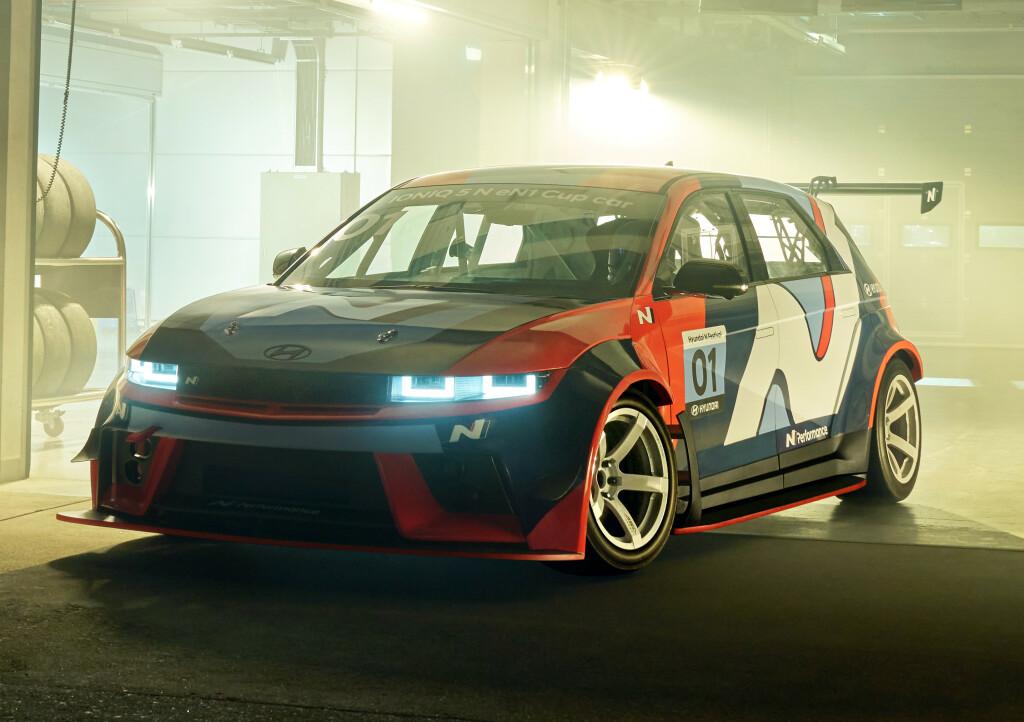

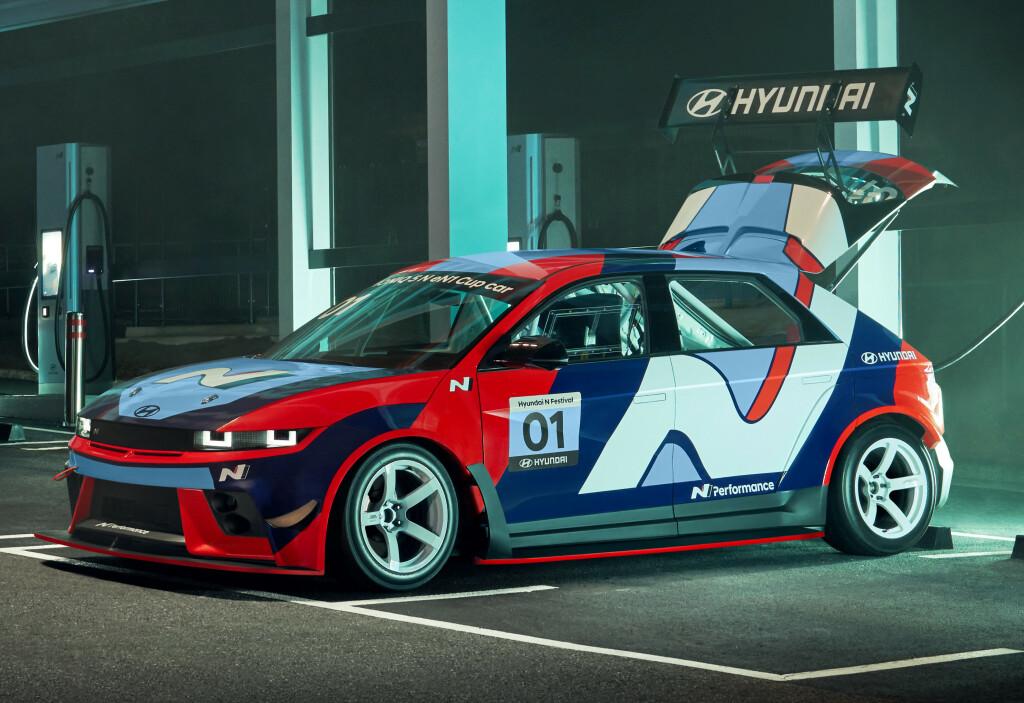
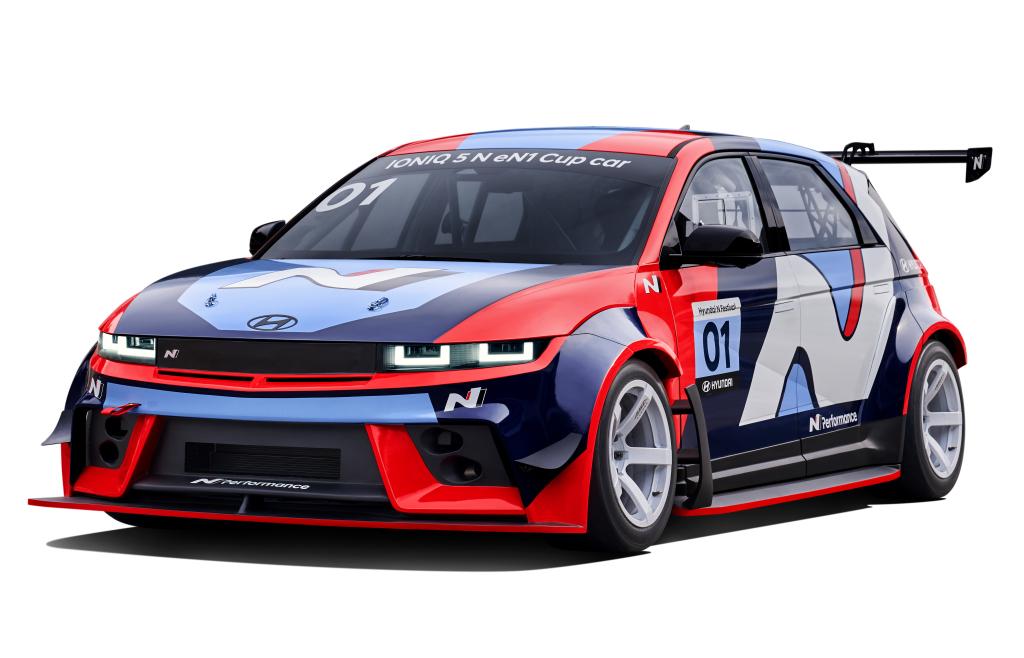
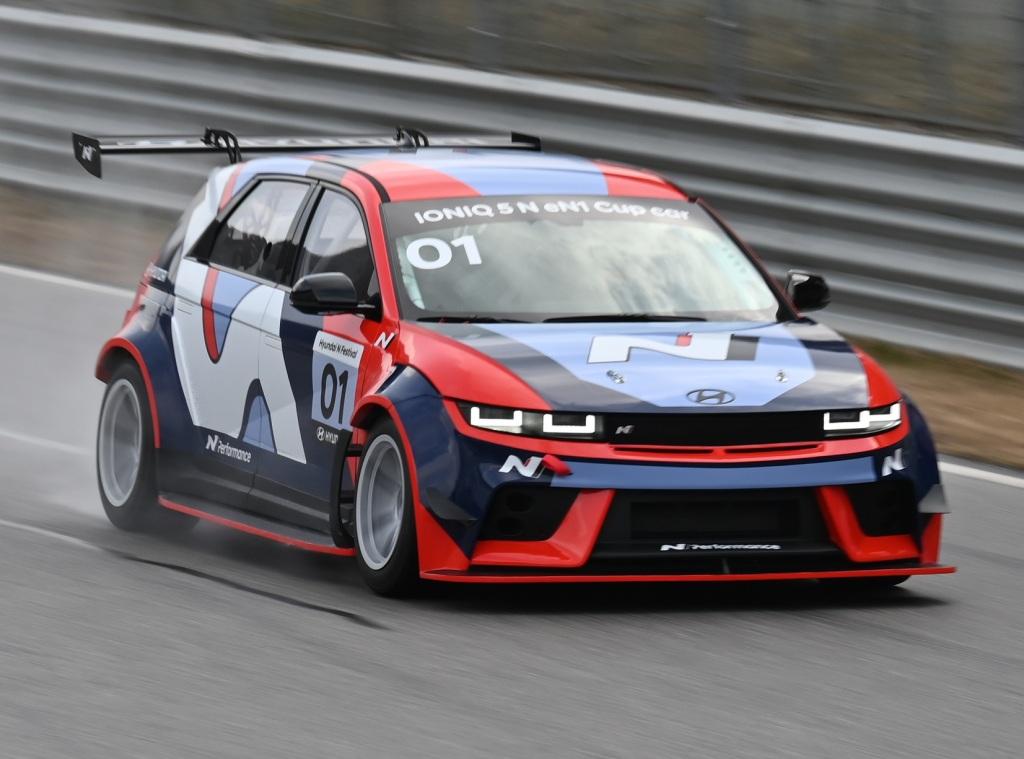


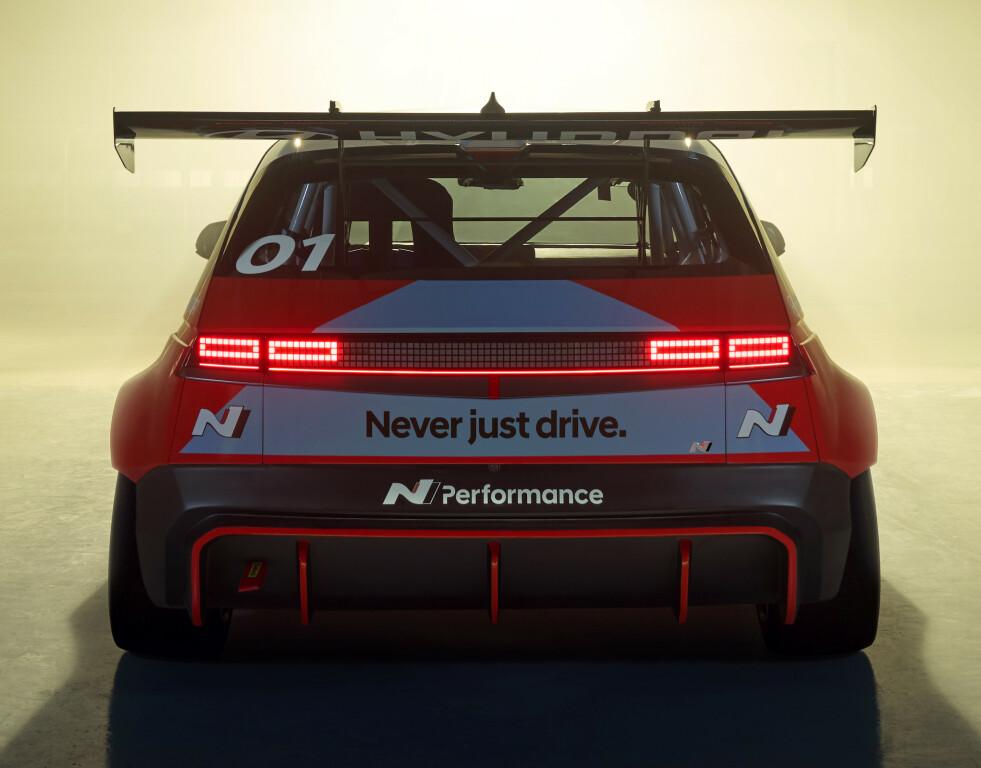


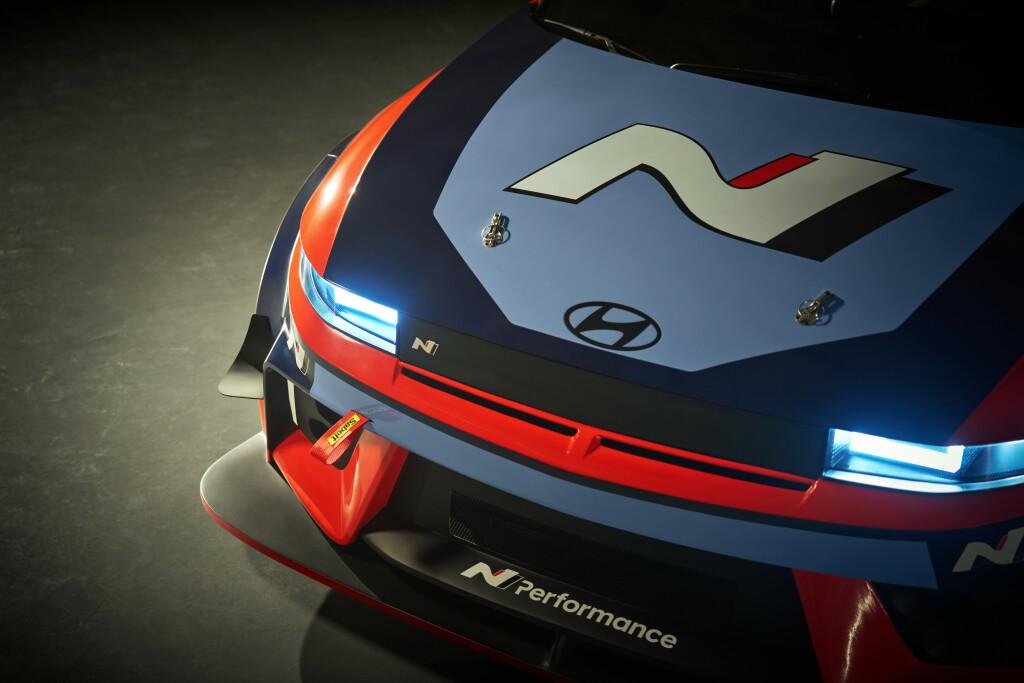

.thumb.jpg.726bf5d0d4b007b828d2604dadfbc750.jpg)

